Watch the 2024 Goodwood Festival of Speed livestream right here
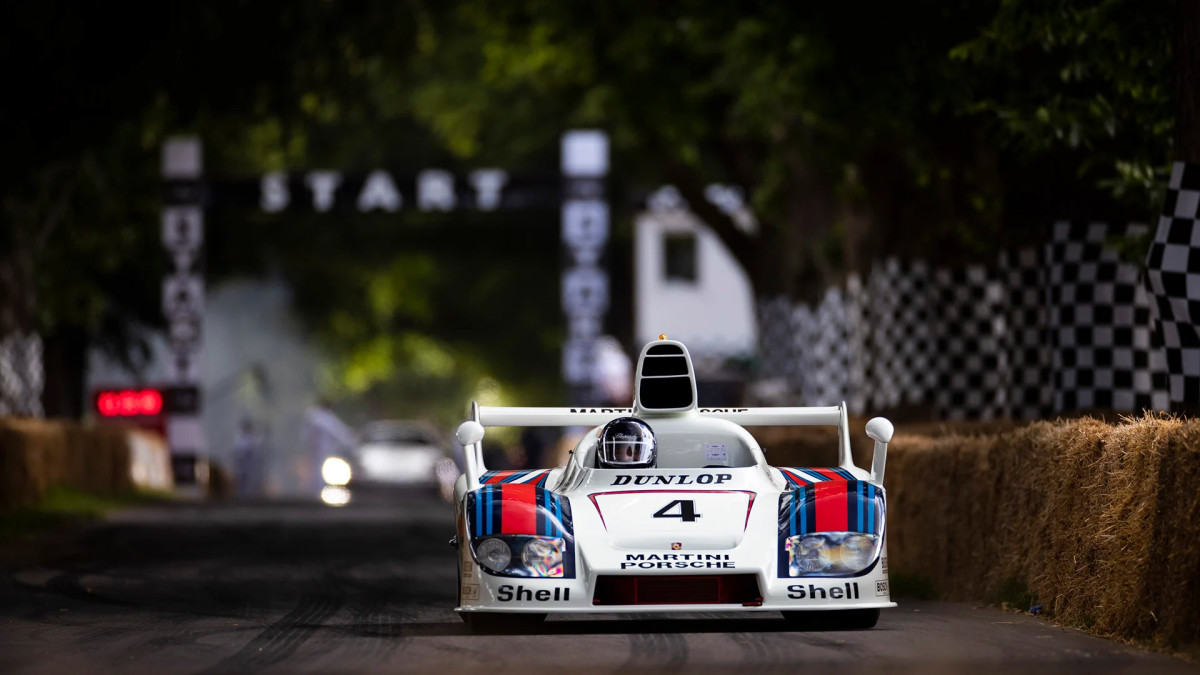 [unable to retrieve full-text content]
[unable to retrieve full-text content]
 [unable to retrieve full-text content]
[unable to retrieve full-text content]
 [unable to retrieve full-text content]
[unable to retrieve full-text content]
Hispano Suiza Fábrica de Automóvil S.A. is a company that dates back to the ‘old days’ of automotive history, between 1904 and 1946 they not only created a total of 12,000 luxury high-performance cars but also 50,000 aircraft engines in Spain, sadly after 1946 this glorious name became somewhat dormant … until 2000, when the HS21 supercar was shown in Geneva, followed by the K8 in 2001 and the HS21-GTS in 2002 as evolutions of the HS21 version.

 The 2001 Hispano Suiza K8
The 2001 Hispano Suiza K8But there is a lot more to know about the history of this glamorous car builder, so take a look at the 10 things you might not know about them is the extract from their latest press release below:
1 – More than 100 years of history
Hispano Suiza was founded on June 14, 1904, by Damián Mateu together with Francisco Seix and Swiss engineer Marc Birkigt, who had worked for two companies that had preceded Hispano Suiza: La Cuadra and J. Castro. Birkigt’s experience in the industry was key in laying the foundations for Hispano Suiza.
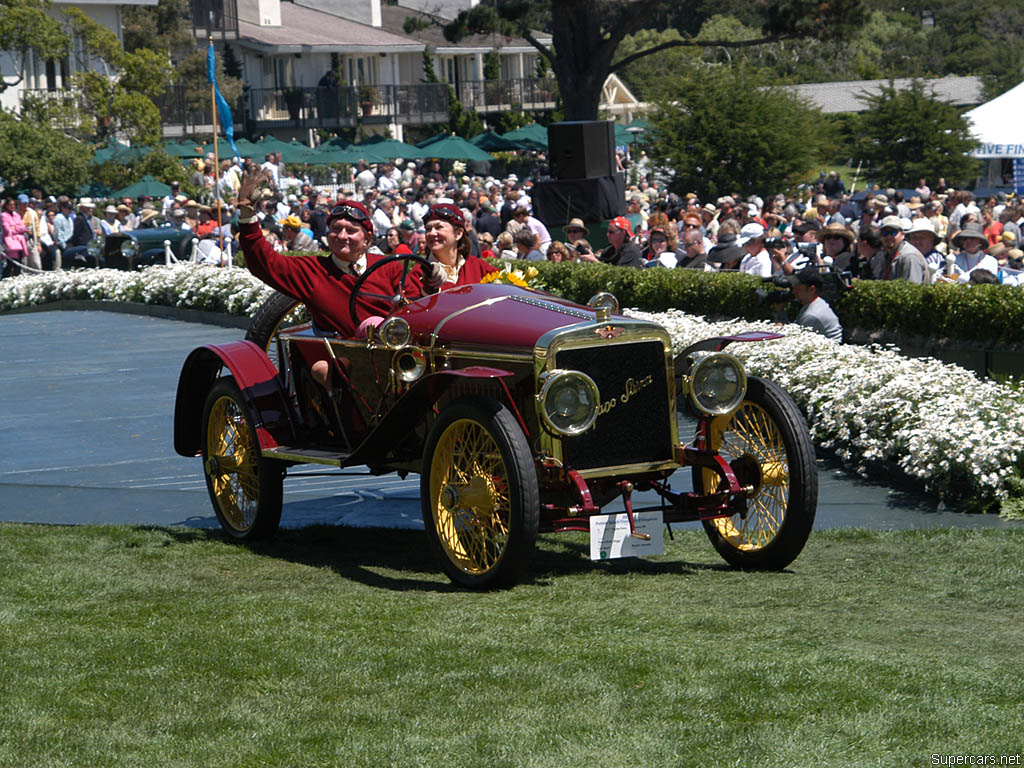

In 1905, Hispano Suiza created their first vehicle, the Armored Type Birkigt System, which was equipped with a four-cylinder engine and 20 CV of power, and which reached a top speed of 87 km/h. It was followed, a year later, by what would be the first car with a six-cylinder engine built in Spain, a model delivering 75 HP of power that completed the Perpignan-to-Paris route in 22 hours, a feat which received great media attention at the time.
2 – Hispano Suiza did not just produce cars throughout its history
During World War I, Hispano Suiza went from producing cars to manufacturing aircraft engines. It was a period of great success for the company: they applied their technological know-how in the manufacture and development of automotive engines to a new field, which brought them great benefits.

 Georges Guynemer and his fighter plane
Georges Guynemer and his fighter planeBirkigt built an aircraft engine that was based on a racing car engine, following the “direct drive” principle, with a V8 layout and aluminum alloy blocks to reduce weight. Hispano Suiza began to receive numerous orders, so many that they had to sell licenses to other manufacturers in France, the United Kingdom, the United States, Italy, Japan and even Russia… In total, more than 50,000 Hispano Suiza engines were built.
Hispano Suiza aviation engines also found their place at sea. The most spectacular engine, a V12 delivering 1,300 HP, was mounted on a series of racing boats, including the so-called Aurora, built in 1935. Birkigt collaborated in the assembly of this boat, which was auctioned a few years ago for a figure close to a million euros.
3 – King Alfonso XIII


King Alfonso XIII played an important role in the early days of Hispano Suiza. The monarch was a car enthusiast, who instantly fell in love with the 20CV Hispano Suiza that he drove in in 1905. So much so that in 1910 he became a shareholder, purchasing 8% of the company shares. King Alfonso XIII also had a car named in his honor, a two-seater sports car, with a 3,619 cc four-cylinder engine, delivering 60 HP, with a top speed of 120 km / h. It was the Hispano-Suiza T45, better known as Hispano Suiza Alfonso XIII.

 King Alfonso XIII of Spain with Hispano Suiza
King Alfonso XIII of Spain with Hispano Suiza4 – A car for the elite
Thanks to the performance of its vehicles, which combined speed with lightness and amazing driving sensations, thanks to its luxury materials, the handcrafted to the highest quality standards, Hispano Suiza immediately rose to fame.
In addition to King Alfonso XIII, the vehicles of the Spanish brand were chosen by aristocrats, intellectuals, and the most renowned artists in the world, such as Gustavo V of Sweden, Carlos II of Romania, Louis II of Monaco, Pablo Picasso, André Citroën, Coco Chanel, René Lacoste, Paul McCartney or Albert Einstein.


The history of Hispano Suiza cars has always been closely linked to clients with high purchasing power, an exquisite taste for luxury and an incalculable passion for the automotive world. Today, classic Hispano Suiza cars are preserved with great care in museums and private collections around the world.
5 – Hispano Suiza, not just a car but an asset of cultural interest
The Hispano Suiza 30-40 HP was an important model in the history of the brand, developed by Birkigt as a replacement for the 20-30 HP. Of all those produced, there was a very special unit custom-built for the Marquis of Zayas and bodied by Francisco Capella.
This model used noble woods and materials such as ivory and silver. The steering wheel was positioned to the right, as it was customary then, and featured mahogany details, ivory handles, beveled glass, automatic blinds, fine cushioned upholstered seats, a perfume diffuser, vases, and numerous details that underlined the elegance and exclusivity of the car. It was a Hispano Suiza made to measure.
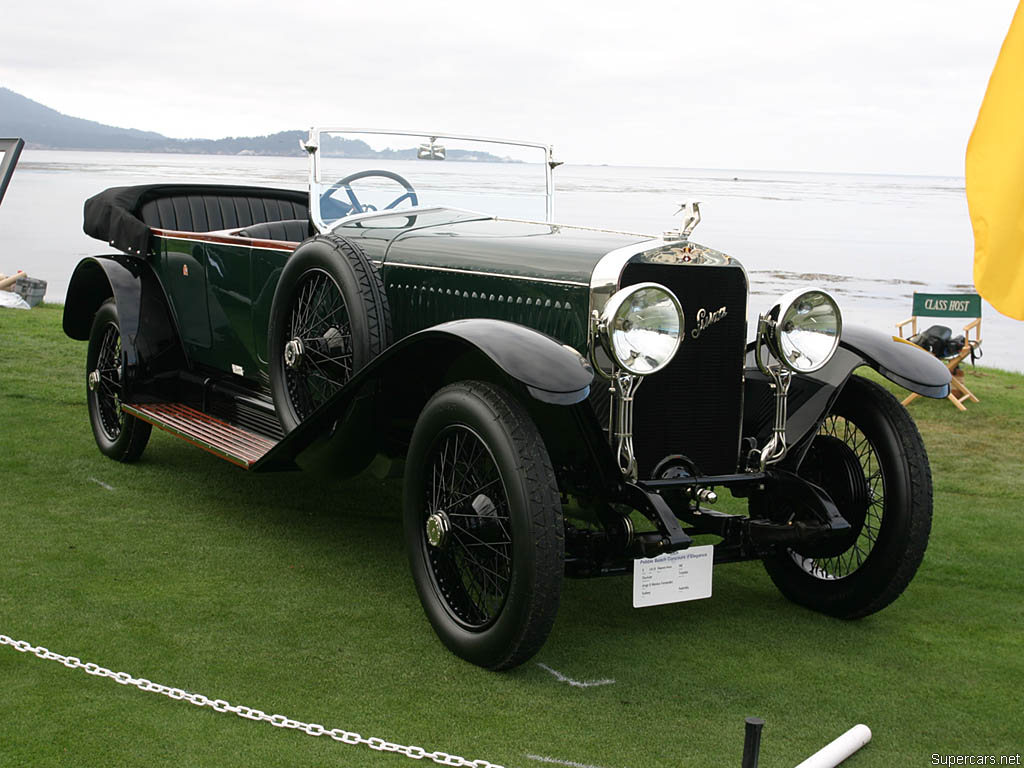

The model, after all cars once belonging to the Marquis of Zayas were auctioned, was acquired by the Spanish Home Office which declared it an Asset of Cultural Interest in 1988, being the first car to achieve this status, which is normally granted to monuments and works of art. The vehicle was then displayed in the Museum of Automotive History located in Salamanca (Spain).
6 – The stork
Hispano Suiza’s emblem, the stork, is a nod to the company’s heritage as a manufacturer of aircraft engines. The brand decided to feature it in all its models to pay tribute to Georges Guynemer, a French fighter ace, who had a stork painted on the fuselage of its fighter jet during World War I, powered by a Hispano Suiza engine.
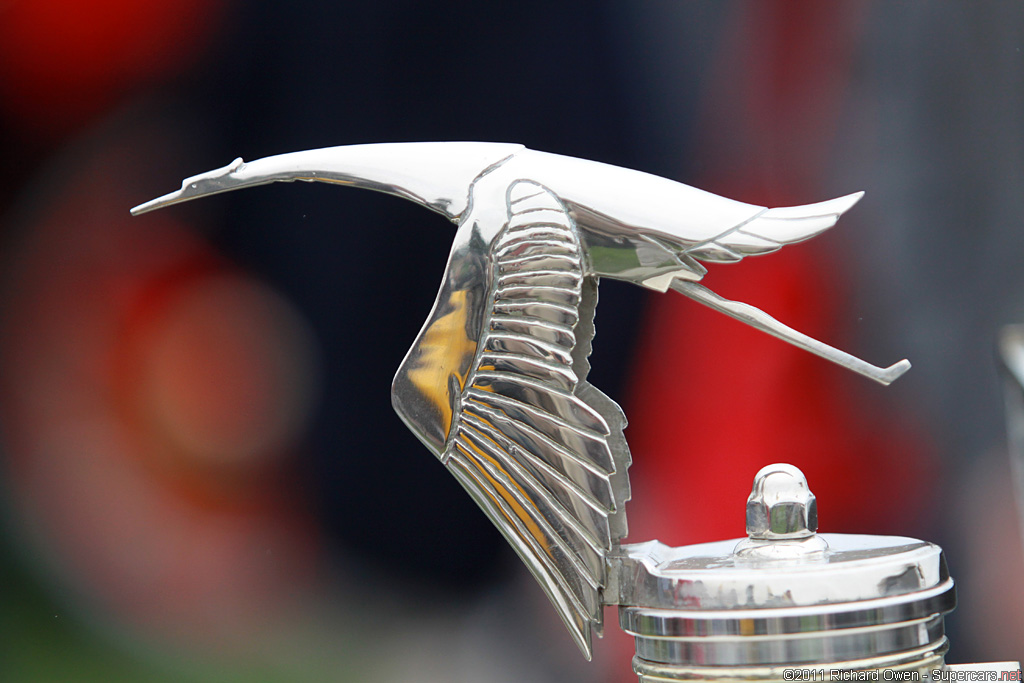

In 1919, the silver stork accompanied the new Hispano Suiza H6B in its presentation at the Geneva Motor Show and, since then, it featured in all the brand’s models, accompanied by the flags of Spain and Switzerland. 100 years later, the stork flew again at Carmen’s presentation, once again at the Geneva Motorshow.
7 – Carmen
Carmen is the name that Hispano Suiza has given to the vehicle with which it made its comeback to the world of automotive manufacturing. It is a model that has already made history; the most technologically advanced that has been designed, manufactured, and developed in Spain. The choice of the name is not a mere coincidence: it is a tribute to Mrs. Carmen Mateu, granddaughter of Damián Mateu – founder of the company – and mother of the current president of Hispano Suiza, Miguel Suqué Mateu.


“The name Carmen is a tribute to our mother. When we were debating what to name the new vehicle, we immediately thought of Carmen and the family loved it ”, declared Miguel Suqué Mateu. “She always told me that she wanted to see Hispano Suiza roaring on the streets again, and I am sure that she would be very proud of it. The signature on the back of the vehicle is her original signature.”
The ‘last name’ Boulogne, which is used for the more powerful version of Carmen, is not a coincidence either. It is a tribute to the victories achieved by the Hispano Suiza H6 Coupé in the Georges Boillot Cup, held in the French town of Boulogne-sur-Mer a century ago.
8 – A car made to race
The Hispano Suiza Carmen and Carmen Boulogne have been developed on the racing circuits. For the creation of this very special model, which was presented at the 2019 Geneva Motor Show, Hispano Suiza had the backing of QEV Technologies, a motorsport company that built the first car that went on to win the drivers’ title in the Formula E championship.


Thus the Hispano Suiza Carmen´s dream performance, typical of a racing car. Its 1,019 CV of power – 1,114 CV in the Boulogne version – and its less than three seconds of acceleration from 0 to 100 km / h, make it one of the most powerful and fastest road cars in the world.
9 – Hispano Suiza has a former F1 driver in their team
After completing the design and manufacturing process, Hispano Suiza handed over the steering wheel to a former Formula 1 driver: Luis Pérez-Sala. Pérez-Sala has been in charge of developing the model on the track and on the road since the Hispano Suiza comeback was announced, and has worked to ensure that the select group of owners of the new Hispano Suiza feel like racing drivers.
In addition to Pérez Sala, Pablo Suárez, an experienced rally and rallycross driver with training as a motorsport engineer, also participated in the development process, bearing witness to the creation of an authentic work of art on wheels.
10 – The opportunity to create the car of your dreams
Each Hispano Suiza Carmen is unique. Thanks to the brand’s Unique Tailormade program, customers have access to a wide variety of options to create the model they have dreamed of all their life. There are 1,904 possible combinations, so no two Hispano Suiza are alike.
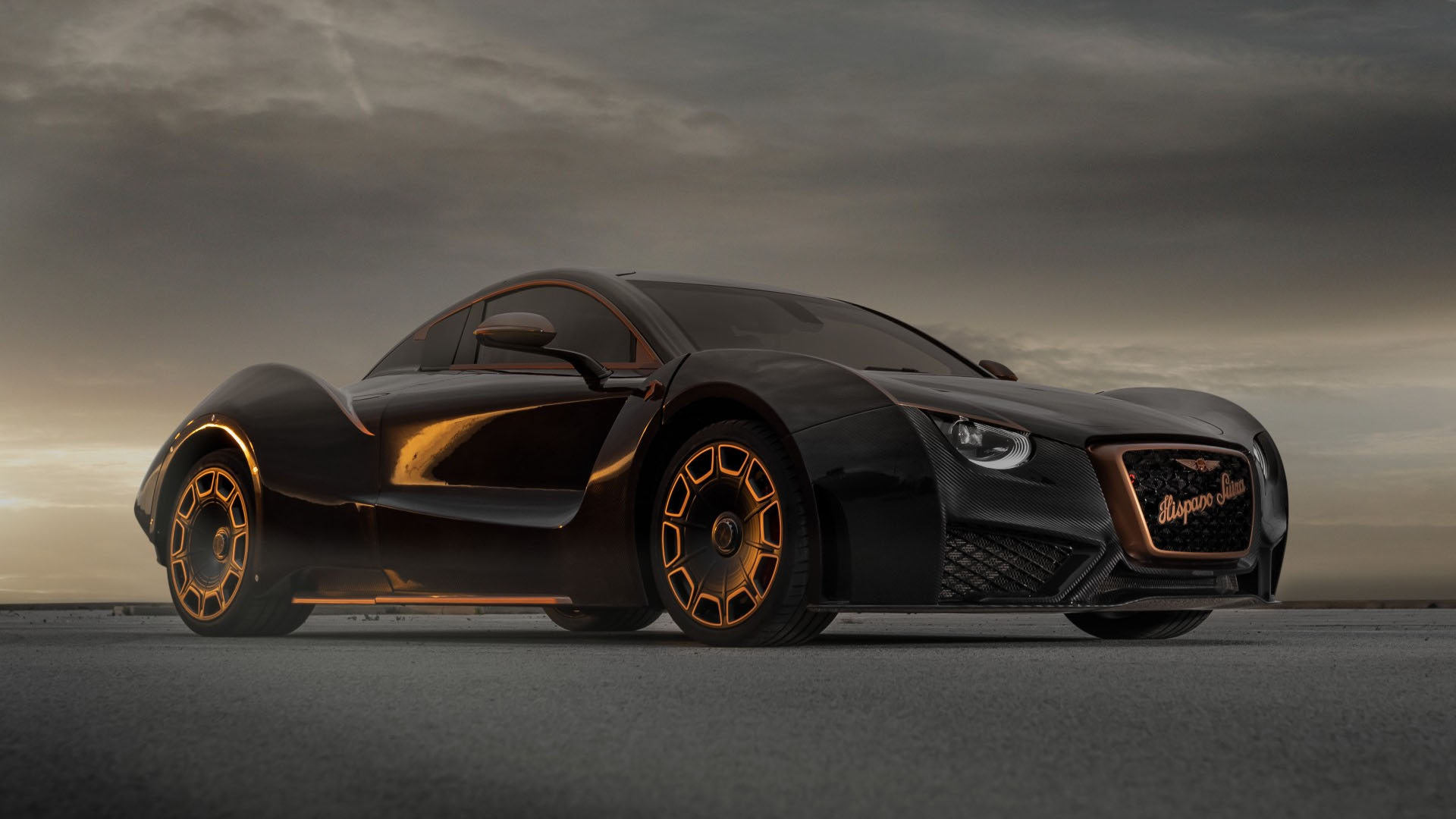
 Hispano Suiza Carmen Boulogne
Hispano Suiza Carmen BoulogneClients can choose between three main configurations that reflect the key values of the brand’s DNA – Elegance, Heritage and Sport – and, based on these, they can choose different colors and materials for the interior and exterior of their car, to add a personal touch to the design and adapt it to their individual tastes. Colors have been chosen and named in a tribute to the history of the brand, and include Peralada Green, Swiss Red, Xenia Gray, Birkigt White, or Begur Blue, among others.
Hispano Suiza is part of the Peralada Group, which represents the pinnacle of luxury in gastronomy and entertainment through its global portfolio of casinos, restaurants, hotels, golf courses, vineyards, music festivals, and marinas.
The concept of restomods is an intriguing one indeed within the dynamic space that’s the automobile industry. The term is reserved for cars, primarily classics that have been ‘restored’ and ‘modified’ (hence the name, restomod) in some way. It is a seamless combination of the ‘old’ and ‘new’ that allows enthusiasts to really get the best of both worlds.
A restomod retains the timeless design elements of the original classic car on which it’s based, wrapped around a modern framework that boasts improvements to safety, handling and comfort. In addition, the modification process crucially takes care of performance flaws found in the original vehicle and is one of the main appeals of the restomod culture.
It may not be as popular as other aspects of car culture like JDMs and the body kit craze. But don’t bet on restomods fading away anytime soon. All the signs indicate that this fascinating aspect of gearhead culture is on a fast track to even more popularity and fame.
Restomods are not a new trend and have been around for several decades in one form or the other. To understand, you need to realize that the ‘50s automotive scene spawned two primary forms of car enthusiasts.
On the one hand, you had the collectors mainly after cars that could be shown off at car shows, the so-called ‘garage queens.’ These people cared less about performance attributes as the vehicles did not get driven around much. The second group were the hot rodders, adrenaline junkies who craved more from their cars in the form of engine power, improved brakes, and other components that significantly elevated the driving experience.
It did not take long for a third group to emerge; those interested in both the car’s styling and performance. This set of people actively sought ways to merge a car’s styling with upgraded performance mods. These classic cars not only got to retain their original design but also received the latest brakes, engines, and other mechanical parts for better performance.


There are those within the car community that kick against this idea. They believe classic cars should be left in their original state, and yes, some of the icons from the classic era are best left alone. The only drawback is that most of these cars are undrivable today, especially with current regulations and emissions standards.
Resto-moded cars offer a workaround here. They retain the visual impact missing from many of today’s automobiles and still allow owners to drive a ‘classic’ that’s practical, reliable and entertaining.
Technological advancements have played a significant role in the growing popularity of restomods. Sophisticated techniques like CNC (Computer Numerical Control) machining can now be used to manufacture custom aftermarket parts that would have otherwise been unavailable. In most cases, these bits prove even more reliable than the factory pieces they replace during the restomod process.
The easier access to a wider variety of parts has helped lower entry barriers to the world of restomods. Now, everyone from budding enthusiasts to established shop owners can spend less time hunting for materials and more time focusing on the actual restomod builds, relying on a host of modern technological methods to help execute their vision.
Then you have the internet, an inexpensive platform that’s allowed restomod builders to showcase their creativity to a large number of people unrestricted by physical boundaries. So far, the audience is lapping it all up. Restomods not only look superb in high-res photos, but they also sound great in videos and look even more impressive when they trump modern sports cars in a match-up at the drag strip or race track.
Social media and online forum communities have played their part in propagating the restomod culture, resulting in viral sensations of the truly standout builds. Examples include the 1969 Ford Mustang Mach 1 ‘Hitman,’ a restomod by Ford-licensed Classic Recreations with 1,000 ponies under the hood.
Speedkore Performance Group also came up with the ‘Hellraiser’, a restomod of the 1970 Dodge Charger with a full carbon-fibre body and a 7.0-litre Hellephant engine that cranked out 1,000-hp and 950 lb-ft of torque.




Restomods are popular with classic muscle cars, but other car types like sports cars and even trucks have also been the subject of interesting ideas. For example, there is the classic Porsche 911 Targa reimagined by Singer Vehicle Design, an American company that specializes in modifying Porsche sports cars.
In 2019, an Indiana-based company debuted a restomod based on a 1966 Chevy K30-style truck. It was a $150,000 behemoth with several mods like massive 37-inch tires, Bilstein shocks, extra bracing and a turbocharged diesel engine tuned to produce 550-hp and an insane 1,300 lb-ft of torque!
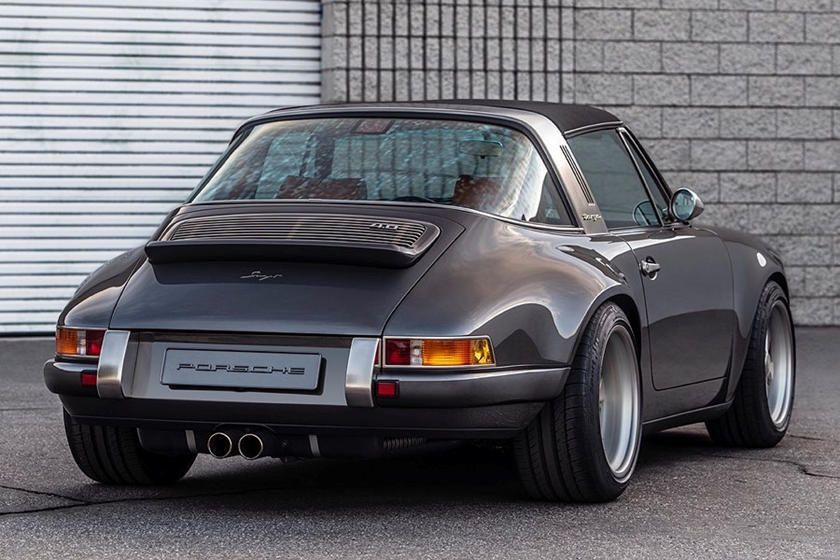



Electromobility is the next big wave in the automotive industry. It’s a trend that’s catching on with restomods as well. Swapping out traditional internal combustion engines with electric powertrains, complete with motors, batteries and circuitry, is not as inconceivable as it once sounded, thanks again to technological breakthroughs.
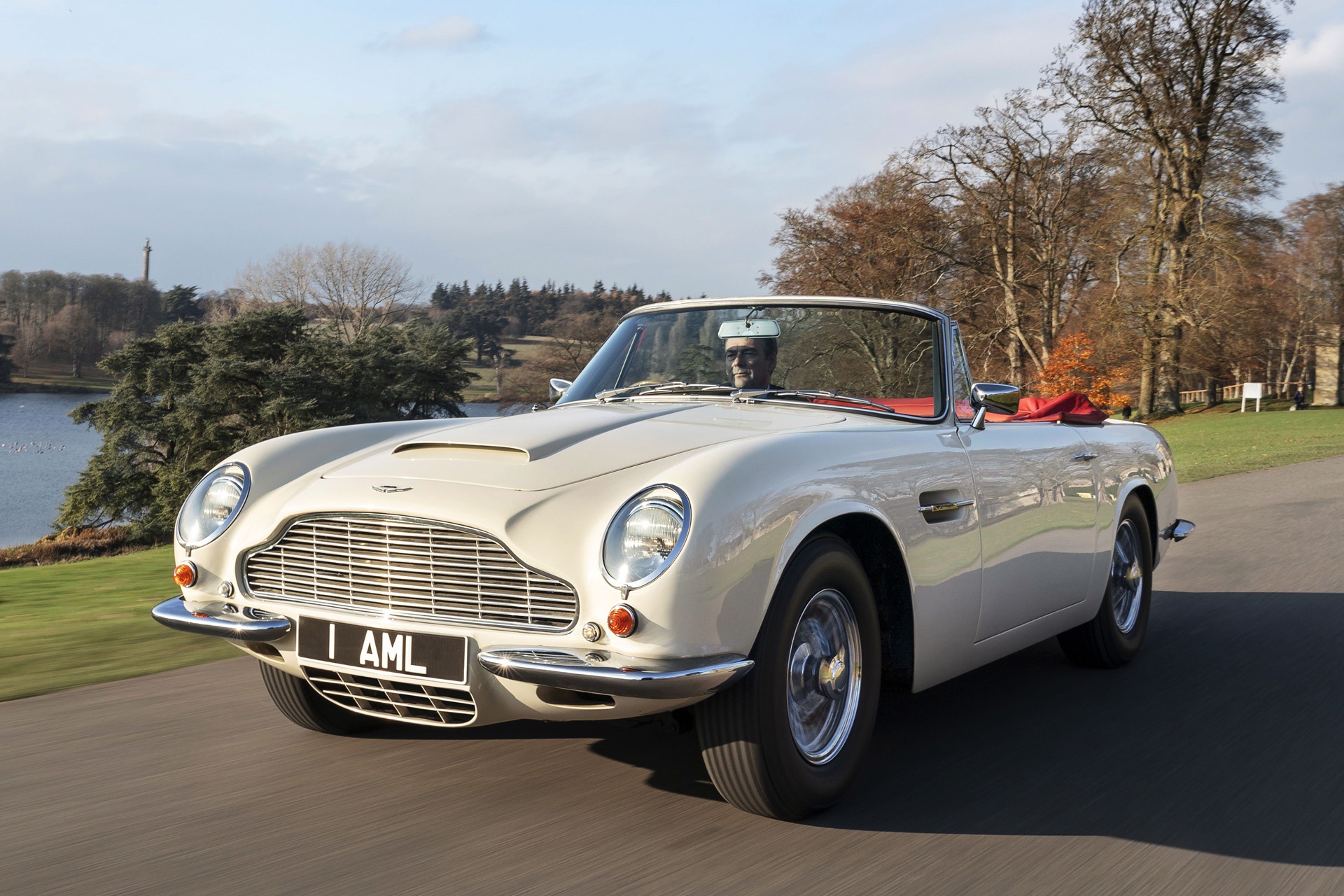

It is still incredibly niche, but there are already important players involved. Just take the 1970 DB6 MK2 Volante Restomod, an all-electric restomod introduced by Aston Martin in 2019 and available to interested clients for about $1.7 million per unit.
In November 2021, Hyundai showcased a 1980s Hyundai Grandeur restomod with a futuristic interior, and exterior complete with fancy LED lighting. More importantly, is the fact that the Grandeur is powered solely by electricity. The recently concluded 2021 SEMA also presented an opportunity for Ford to show off a 1978 Ford F-100 electric restomod with 480-hp on tap.




Apart from established carmakers, you also have boutique companies like UK-based Everatti and Netherlands-based Voitures Extravert specializing in electrifying classic vehicles from manufacturers including Land Rovers, Fords and Porsches.
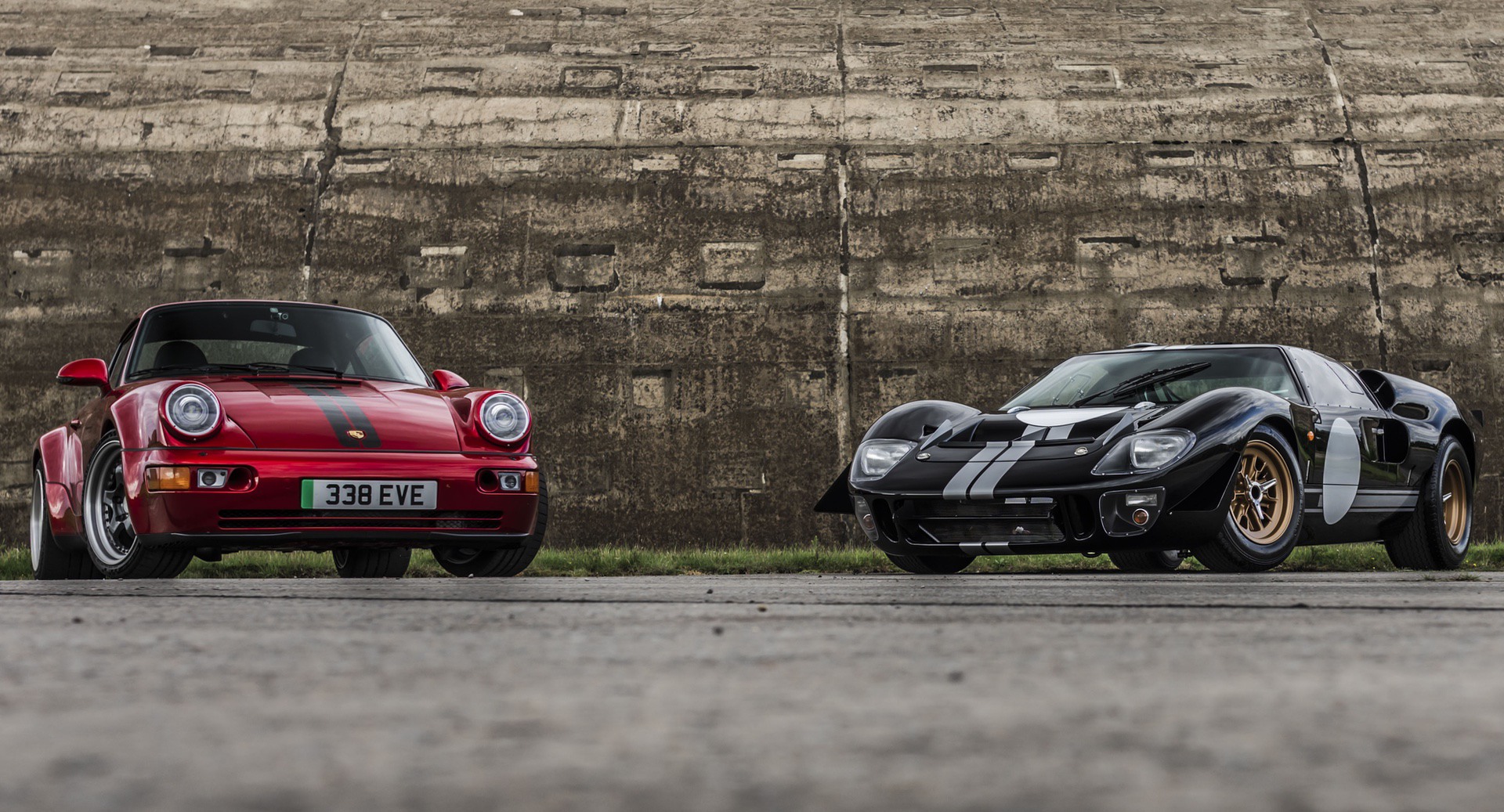

Further down the chain are even smaller outfits and individuals who have attempted to create their own custom electric restomods like the Charge ‘Eleanor’ Ford Mustang with four motors that produce a total of 543-hp and 885 lb-ft of torque.
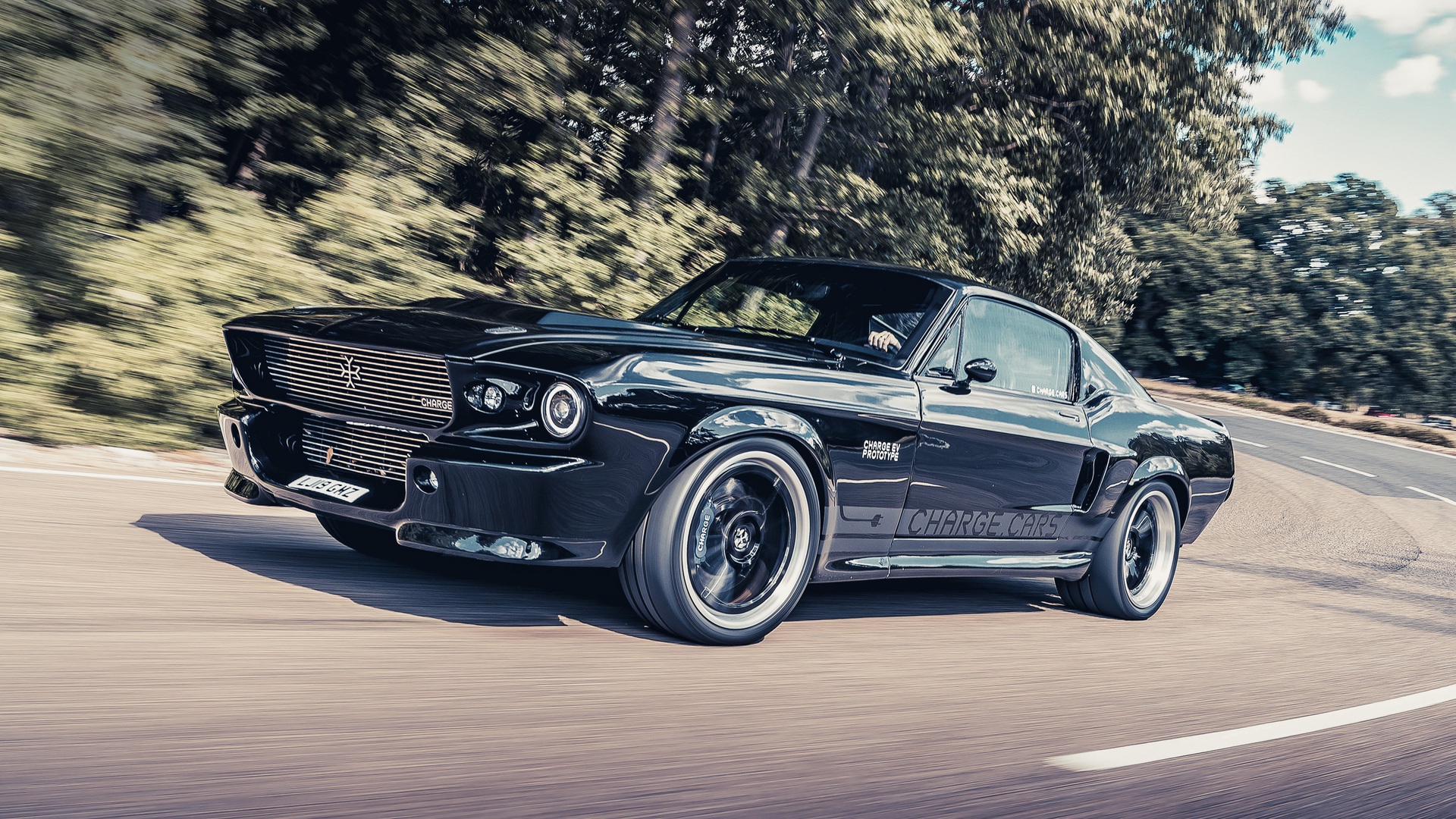

It appears that restomod culture is gearing up to keep pace with the EV revolution, and electric restomods may turn out to be just as popular as the traditional fossil-fuel counterparts sooner than later.
The idea of restomods is bound to get even more entwined with the mainstream car culture as time goes on. Enthusiasts should be happy about that, and those who oppose the idea will do well to get on the bandwagon and applaud the hobbyists bold enough to tackle restomod projects.
Restomods may just turn out to be one of the most important ways by which we can continue to appreciate our favourite classic cars and see them being properly driven on the roads rather than squirrelled away in hidden collections until they rot away and fall apart. Okay, that may be an extreme scenario—but surely you get the point.
Recently, the unmatched, flashy, sporty, three-wheel vehicle, Polaris Slingshot announced its 2022 model year lineup. It featured four trim levels and numerous accessory options that really elevates the drive, style, and sound. The 2022 Slingshot lineup has a practically limitless personalization options that will really enable their owners to really customize their Slingshot.
Polaris Slingshot Vice President Chris Sergeant shared, “There’s no wrong way to enjoy a Slingshot. Whether attracting attention with head-turning styling or escaping for an adventure, nothing on the road allows drivers to make their mark more than a Slingshot. We’re excited to bring SLR back to expand the Slingshot lineup and provide our owners even more personalization opportunities with thrilling new factory accessories.”
The 2022 Slingshot lineup perfectly brings together style, excitement, and numerous personalization opportunities. The new lineup can help empower drivers to create their own adventure and really make a statement.
At the forefront of the 2022 model year news is the reintroduction of the SLR, a stylish new Excursion Top, the new Vented Sport Hood, and premium Brembo® Brakes.
The new Slingshot SLR brings both style and performance. The Slingshot SLR model is right in the middle of the SL and the top-of-the-range R model. It is equipped with the ProStar four-cylinder engine with 203 horsepower. It has a really sporty look especially with its two-tone paint scheme. The SLR really makes a statement without sacrificing superior amenities like the Sport Interior Package of the Slingshot as well as the seven-inch display that is powered by RIDE COMMAND.
The all-new Excursion Top adds to the accessory top offering for the Slingshot. The new Excursion Top has an improved driver headroom and visibility and an integrated toolless install and removal soft top. The Excursion Top is exclusive to 2022 models and can be had for an additional $1,799.99.
The all-new Vented Sport Hood for the Slingshot adds a unique style while also improving aerodynamics and the airflow in the cockpit through the vented fenders and hood scoop. Made from all-new durable fiberglass composite material, it gives the Slingshot a more premium fit and finish. The Vented Sport Hood comes as standard for the 2022 R model, it is also available as an accessory upgrade for all 2020-2022 models, and it will come in a solid color or any stock graphic package.
All 2022 R models will be equipped with the four-piston Brembo® brakes as standard. For those with an older model, it can be purchased as an update. The Brembo® front brake rotors are 14% bigger than standard front brakes and it features fixed calipers.
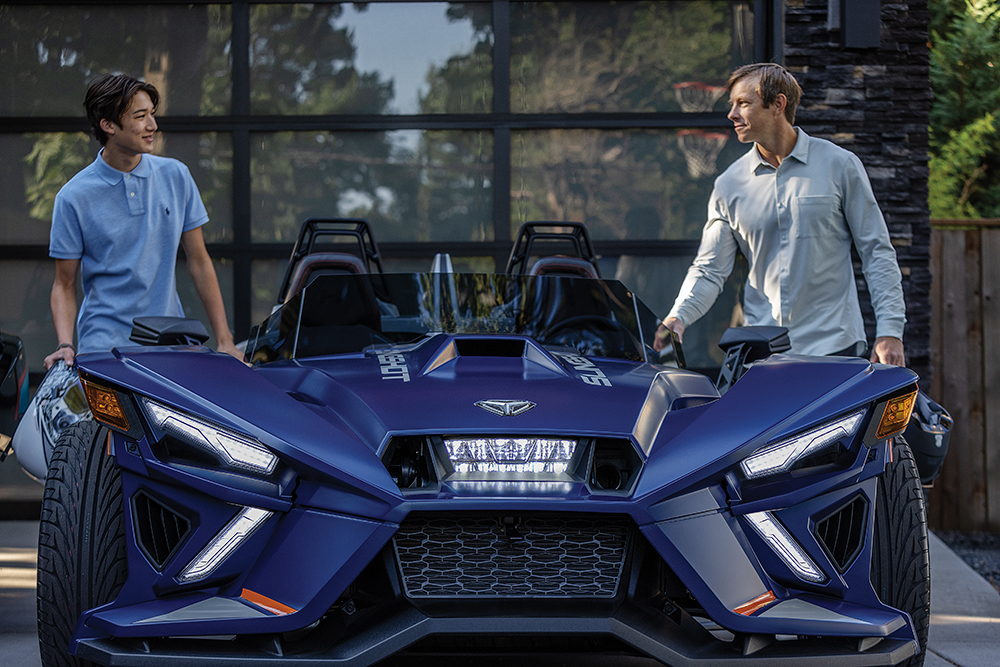

Unleash your creativity with the four curated accessory collections for the Slingshot. The collection will help really elevate the Slingshot experience as it caters to your personal preference and driving style. The Slingshot Drive Series will help you take your drive to the whole different level. If you’re more the adventurous type and always look for that extra mile, you can definitely ride in comfort with the Escape Series. The Show Series and the Design Series of the Slingshot is perfect for those who really want to stand out and it offers really eye-catching accessories that the drivers can use on their Slingshot. Each accessory is sold individually so the possibilities are limitless for you to mix and match to make your personality shine through the Slingshot.
Bring your driving experience to a whole new level. The Drive Series was selected to celebrate your love for driving as a hobby, and not a necessary means to get from one place to another. It has improved aerodynamics and cockpit airflow from the Vented Sport Hood to enable you to go that extra mile. The Excursion Top as well as the Heated and Cooled Seats are added comfort. AutoDrive will allow you to take control using paddle shifters giving the Slingshot a boost in performance with an additional 25 horsepower with the Stage 1 ProStar Tune. Other parts in the collection include the AutoDrive Dead pedal, Slingshot Clear Intake, and new Ripper Ventilated Wind Deflector.
Fuel your love for driving with the Slingshot’s Escape Series. It is designed to empower you to conquer the open road with the upgrades that were designed to give both the driver and passenger lasting comfort during the whole drive. The Excursion Top is great protection from the elements, while the Heated and Cooled Seats adds comfort no matter the weather. There are also additional storage options like the all-new Roll Hoop Storage Bag and a Center Console Bag, Dashboard Bags, Side Storage, and Overnight Driver and Passenger Bags gives you a lot of different options to get your stuff ready for a long weekend getaway.
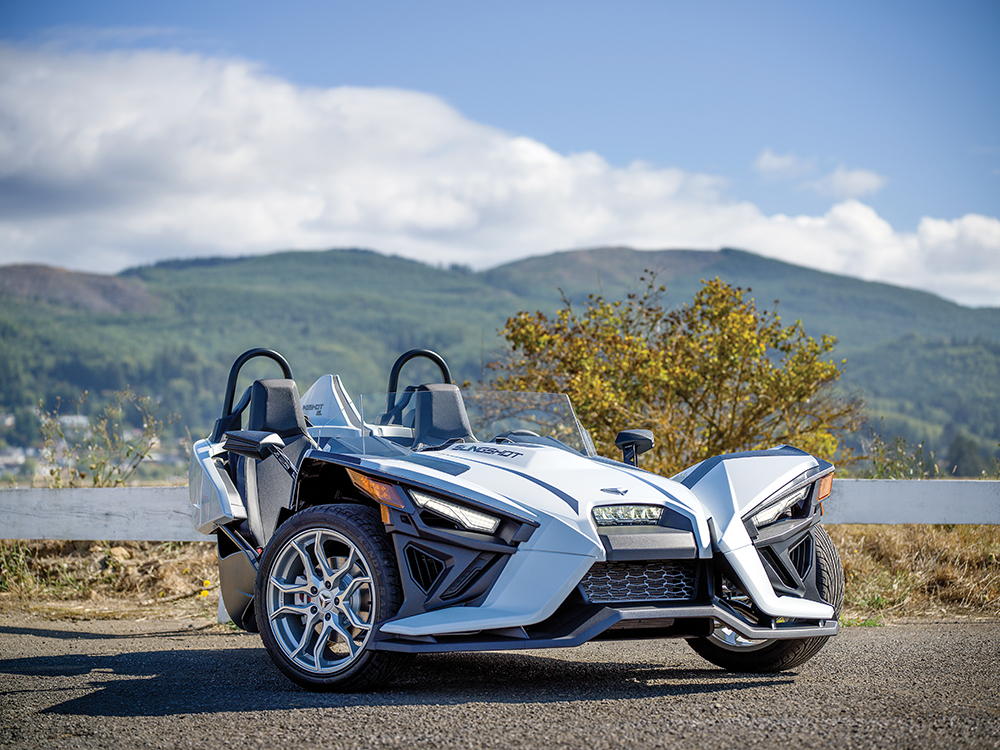

Be the star of the show with the Slingshot Show Series. The Show Series is equipped with the Slingshot Stage 3 Roll Hoop Audio Kit by Rockford Fosgate® so it delivers full, crystal-clear sounds while you’re cruising the streets or the open roads. It also features a Premium Interior Lighting Kit by XKGlow® so you can outfit the interior with six LED lights and LED light pods in different locations. Using the mobile Slingshot LED app, you can set two different light zones to any color at once. You can even choreograph the lights while the music plays.
Unleash your creativity and let the Slingshot be your canvass. The Slingshot Design Series enables you to personalize your Slingshot through customization. Let your Slingshot speak for you as it showcases your personality. It has the Slingshade top, Vented Sport Hood, and numerous color-matched parts. The Design Series really encourage you to put your personal touch with keen attention to detail. Other accessories that are part of the Design Series include the Blacked Out Badge Kit, Painted Front Grille, Low Tinted Riper Wind Deflector, Painted Belt Guard, Hoop Accent, Upper and Lower Accent Kits, and color-matched Rear Fender.


The pricing and color availability for the 2022 Slingshot model lineup are:
The Slingshot S is like a blank canvass just waiting for you to personalize it to your taste. The 2022 model is available in Ghost Gray and in both manual (MSRP $19,999; MSRP $20,299 in California) and AutoDrive (MSRP $21,749; MSRP $22,049 in California).
The Technology Package adds a 100-watt Rockford Fosgate® audio system with a 2.7-inch display, speaker pods, and Rockford Fosgate® tweeters in the dash. Other upgrades given to the Slingshot S with the Technology Package 1 include the standard Ripper Series Clear Wind Deflector to improve comfort, and the vehicle security package. The Slingshot S with Technology Package 1 comes in two colors: Ghost Gray and Slingshot Red. MSRP for the manual is $22,799 ($22,799 in California) and AutoDrive is $24,549 ($24,549 in California).
The Slingshot SL adds more features and style. The enhanced features of the SL include premium finishes, additional style components, and a 100-watt Rockford Fosgate® audio system with a seven-inch touchscreen display powered by RIDE COMMAND. Color variants for the 2022 SL models are Slingshot Red Pearl, Ultra Blue, and Moonlight Metallic White. MSRP for the manual is at $25,999 (MSRP $26,299 in California; MSRP $32,999 CAD) while the AutoDrive is at $27,749 (MSRP $28,049 in California; MSRP $35,199 CAD).


The Slingshot SLR provides both style and comfort. The 2022 SLR have gloss and matte finishes, multi-tone paint with full body graphics, and premium sport seats. The 2022 SLR model is available in Forged Orange finish and is available in both manual and AutoDrive. MSRP for the manual is at $28,899 (MSRP $29,199 in California; MSRP $36,799 CAD) while the AutoDrive is at $30,649 (MSRP $30,949 in California; MSRP $38,999 CAD).
The Slingshot R will definitely grab attention with its bold paint scheme, premium features, and unique style. Powering the Slingshot R is the 203 hp ProStar engine, and it features paddle shifters for the Autodrive, Brembo® painted front calipers, Apple CarPlay®, connected services, and a seven-inch touchscreen display powered by RIDE COMMAND with turn-by-turn navigation. The 2022 R models are available in two colors: Pacific Teal Fade and Midnight Storm Face. MSRP for the manual Slingshot R is at $32,499 (MSRP $32,799 in California; MSRP $40,999 CAD) and while the AutoDrive is at $34,499 (MSRP $34,799 in California; MSRP $43,499 CAD).
In early 2022 the Slingshots will be delivered to dealers. To know more about the 2022 lineup, you can visit https://slingshot.polaris.com/en-us/.
Automobili Pininfarina’s pure-electric Battista was awarded the ‘Hyper GT of the Year’ at the 2021 TopGear.com awards. The title’s expert panel of writers chose this year’s winners, and the judges were all praises for the Battista for its exhilarating performance and gorgeous design.
The ‘Hyper GT of the Year’ is the latest accolade it has received after just being awarded the prestigious Design Award at the Concorso d’Eleganza Villa d’Este in October. A production-ready hyper GT with a unique specification made its debut at Lake Como in Italy for the exclusive event. The example had an exquisite Verde Paradiso finish matched with a tan leather interior.
[embedded content] [embedded content]Top Gear magazine editor Jack Rix stated, “The Battista is a triumph given what it set out to achieve. It’s beautiful inside and out, and violently fast. Mark my words, you will never get used to the Battista’s club-round-the-head acceleration, because the human body is simply not equipped to. At this stratospheric performance level, it’s all about conjuring up an experience that lodges in your brain and gets the adrenaline flowing. And it is impossible to drive this car and not be mesmerized.”
“The Automobili Pininfarina family is honored that the Battista has been named ‘Hyper GT of the Year,’ by Top Gear. It’s an award that captures exactly what the Battista is about: the very pinnacle of sustainable luxury and electrified performance combined with sensational design,” Automobili Pininfarina Chief Executive Officer Per Svantesson added. “We are now ready to begin handcrafting customer cars at the Battista Atelier in Cambiano, Italy. Every Battista will be bespoke to the taste of its owner, yet each will offer the sublime blend of exquisite design and incredible performance that are now recognized by the BBC Top Gear team. This award is a perfect reward for the team that has worked so hard to bring Battista to life.”
There will only be a maximum of 150 hand-built Battistas that will be produced and this already includes the five extremely exclusive Battista Anniversario models. The Battista already made its debut in the US and Europe and the powerful 1,900 hp and 2,360 Nm torque hypercar blew the clients away with its performance in a series of test events held weeks afterwards.
The Battista is nearing its final phase of development with customer deliveries expected in the near horizon – around early 2022. Since the start of the Battista development program, the engineers of Automobili Pininfarina worked hand in hand with former Formula One and Formula E driver Nick Heidfeld. The Automobili Pininfarina Test and Development Driver recently talked about the most powerful Italian sports car ever created both on the road and on track.


“It has been a real privilege to play a part in developing Battista, which represents a significant evolution in the world of hyper and luxury cars. From the first time I experienced Battista’s performance in 2019 in an advanced simulator, to today on road and track, I believe the Automobili Pininfarina team has successfully developed a unique hyper GT that is enormous fun, as well as incredibly fast.” Heidfeld shared.
Throughout the development process, engineering excellence has been of paramount importance as the Battista is currently the most powerful Italian production car. The advanced e-powertrain and bespoke driving dynamics gives the Battista its tailored driving experience which has impressed Heidfeld during the whole process.
In the Furiosa mode, you’ll experience the full 1,900 hp of the Battista as it also uses the full torque available from the four independent electric motors. The Battista can go from 0 to 100 kph in less than two seconds and it also has a recorded top speed of 350 kph. The original projection of the Battista was that it will be able to produce 2,300 Nm of torque, but in reality the great engineers were able to increase it to 2,360 Nm. The power comes from the two 250 kW and two 450 kW motors from the front and rear, respectively. Each front motor has 280 Nm of torque while the rear motors have 900 Nm.


“In this test I was able to drive Battista with full power available. The effect under acceleration is completely mind-bending – drivers will never bore of the experience, no matter how many times they feel it. This road car sprints faster than a Formula 1 car, and in Furiosa mode, I was left with a huge grin on my face every time. Every client that experienced Battista with me was positively overwhelmed by the experience – there is simply nothing like it.”
Heidfeld continued, “Battista is a beautiful piece of design, and its formidable presence is now enhanced by its unique exterior sound. With Battista in Furiosa mode, the exterior sound is at its most audible setting and it instantly made me smile on approach. You hear Battista before you see it – the car appears ‘alive’, and it helps develop an emotional connection that I honestly did not expect. The team had a tough target to hit here, and I believe this strategy is now proving a success.”
Using the Battista’s advanced torque vectoring system, the four independent high-performance electric permanent-magnet synchronous motors (PMSM) independently share the power to each wheel. This allows the Battista to deliver accurate and efficient shift of torque compared to torque vectoring by braking.
A beautiful rotary dial provides control of the driving experience. It is placed strategically next to the driver to easily allow for quick changes between driving modes settings namely: Pura, Energica, Calma, Crattere, and Furiosa. Each of them gives a unique character to the Battista’s drive, adapting perfectly to a variety of driving conditions.
“The handling on open roads – even on unpredictable surfaces – proved Battista to be beautifully balanced. Just how a hyper GT should feel. Battista’s performance on track had already surprised and impressed me after I experienced it in Nardo earlier this year, so my expectations on this occasion were set high. This test however confirmed that the team has achieved its target of creating a new type of hyper GT which is rewarding on all surfaces. The ride quality and damping both feel excellent, and the steering feels natural and the perfect fit for what we want to achieve in Battista. I am very sensitive to steering feel as a racing driver, and the sweet spot here is for it to feel light yet connected, and direct yet smooth,” Heidfeld shared.
The Battista went though thousands of miles of software simulation for calibration before it was even introduced to development. The driving modes enable the driver to fine-tune the driving experience and to unleash the full potential of the advanced torque vectoring system as well as the hyper GT characteristics of the Battista.
“Our cooperation with Nick Heidfeld started in 2019, when he participated in the first physical ergonomic test of the Battista interior model; evaluating the driving position and the proposed HMI system. This was followed by him ‘virtually’ testing Battista in an advanced driving simulator where we started to tune the hyper GT’s bespoke chassis dynamics set-up. Nick has been a brilliant partner throughout the whole development program, not only for his driving skills and unique experience in both Formula 1 and Formula E, but also for his ability to evaluate and improve the program in its various stages of development by delivering the anticipated view of our customers,” shared Automobili Pininfarina Chief Product and Engineering Officer Paolo Dellacha.
“This input was essential as we aimed to combine the extreme performance of a hypercar with a much wider spectra of usability in Battista, where outstanding power and torque are always accessible, safe and enjoyable on roads every day. Battista now has incredibly refined body and axle balance, perfect integration of e-powertrain and chassis domain controls, and optimum specific calibrations of its five Drive Modes. Coupled with its highly-connected User Interface and unique Sound Experience, Battista is now redefining the essence of Granturismo.”
PERFORMANCE
• Range: up to 500 km
• Acceleration 0-100 km/h: Under 2.0 seconds
• Acceleration 0-300 km/h: Under 12.0 seconds
• Power output: 1,900 hp
• torque: 2,360 Nm
• Top speed: 350 km/h
• Drive: All-wheel drive with full torque vectoring
• Driving modes:
o Calma
o Pura
o Energica
o Furiosa
o Carattere (The option drivers may select to modify Battista performance and dynamics to their own preference)
BRAKES
• Brembo CCMR carbon-ceramic 390 mm discs with six-piston calipers front and rear
WHEELS
• Standard: 20-inch forged aluminium front and rear ‘Prezioso’ wheels, or:
• Optional: 20-inch front and 21-inch rear forged aluminium ‘Impulso’ wheels
TIRES
• Michelin Pilot Sport Cup 2R
BODY
• Full-carbon fiber monocoque with carbon fiber body panels Aluminium crash structure front and rear
BATTERY PACK
• Layout: T-shaped liquid-cooled lithium-ion
• Supplier: Rimac Automobili
• Battery energy: 120 kWh
CHARGING
• DC fast charging capability at up to 250 kW
In the first nine months of 2021, Porsche sold 28,640 Taycan units, about 13.2% of the carmaker’s total volume and a massive year-on-year increase of over 160%. More impressive is the fact that the EV outsold Porsche’s iconic 911 for the first time over the same period.
It is worth mentioning here that the Porsche Taycan is only in its 2nd full year of production, having been launched at the 2019 Frankfurt Motor Show. Sales likely would have been even higher, were it not for the effects of the ongoing COVID-19 pandemic and the global chip shortage ravaging the automobile sector. The sales volume paints a pretty upbeat picture when you remember that the Taycan’s prices range from $81,000 to $185,000, depending on the model variant.
Today, the Taycan ranks only behind the Cayenne and Macan (both SUVs) in global sales. Clearly, Porsche has hit a home run with its sole EV offering.
The Taycan’s remarkable achievement, in such a short period, perfectly sets the stage for Porsche’s electrification drive as the carmaker looks to expand its EV offering to other vehicle types in its lineup.
It is possible Porsche might not have anticipated the runaway success of what is currently the only all-electric vehicle in its lineup. However, that does not mean the carmaker did not put in the work needed to ensure the Taycan had a smooth introduction into the market. The launch of the Taycan was the result of several years of research and development rather than a quickfire ‘bandwagon’ approach.
Interestingly, you would have to go back to the roots of the carmaker’s history to establish Porsche’s connection with electrification. Ferdinand Porsche, the company’s founder, was always fascinated by electricity.
In 1893, Porsche was able to successfully install an electric system at his parent’s house. Four years later, he was Head of Testing at an electrical engineering firm called Vereinigte Elektrizitäts-AG Béla Egger in Austria, and the first vehicles he designed had electric drives.
In 1900, Porsche was responsible for the world’s first functional hybrid car, dubbed the ‘Semper Vivus,’ Latin for ‘always alive.’ a year later, the production version of the vehicle, known as the Lohner-Porsche Mixte, was ready.
The Mixte was far ahead of the technology at the time, which ultimately proved to be its undoing. The available infrastructure just was not ready for any form of large-scale electromobility research and development.
The dream, though, never really died. The idea of electrification was finally revived at Porsche AG, about a century later, buoyed by advancements in the development of lithium-ion batteries.
First, there was the 2010 Porsche Cayenne S Hybrid, followed by the 2012 Panamera S Hybrid. Porsche also conducted tests with three all-electric Porsche 911s in 2011.
Other cars, like the 918 Spyder and 911 GT3 R Hybrid race car followed, with each breakthrough allowing Porsche to gain valuable experience to develop its first all-electric vehicle. There were no cutting corners with the Taycan. By the time the production spec was ready, Porsche had invested about $1 billion with over 1,000 employees involved during the development process at one point or the other.
One of the highlights at the 2015 Frankfurt International Auto Show was the Mission E, a concept car showcased by Porsche. The EV concept had an 800-volt drive system, boasted more than 600-hp and a battery range in excess of 300 miles.
The Mission E was very fast too, with the ability to rocket from 0 to 60 mph in as little as 3.5 seconds. The interior featured innovative technology with instruments controlled via eye-tracking and hand gestures. Porsche, with the board’s full support, were clear about their intentions to bring the car into production before the end of the decade.
By June 2018, the name of the planned production all-electric sports car was revealed as the Taycan. Picking the name was an elaborate process that involved whittling down a selection of over six hundred ideas.
Taycan is a blend of two Turkish terms that roughly translates to ‘soul of a spirited young horse.’ Interest continued to build up in the launch of the Porsche Taycan, and reservations hit 30,000 deposits by July 2019, forcing Porsche to revise initial production estimates of 20,000 units in the first production year.
Finally, in September 2019, after four years of hard, relentless work, the German carmaker debuted the production version of the Taycan. It was the first production all-electric vehicle to utilize a two-speed transmission and an 800-volt architecture for quicker acceleration and faster charging times.
Porsche tried as much as possible to stick to the design language of the Mission E, but there were differences—like the wider intakes and a deployable rear wing on the Taycan. The Taycan also ditched the suicide doors of the concept and adopted a flatter roofline to create more headspace for rear passengers.
Porsche took advantage of the strong interest surrounding the Taycan and made the car available in two variants at launch. There was the Taycan Turbo and the more potent Taycan Turbo S version.
Both variants generate a restricted 616-hp to protect the drivetrain from overheating. Still, there’s an ‘overboost’ function that can briefly push this number out to 670-hp for the Turbo and a thumping 750-hp for the Turbo S.
The Taycan Turbo S, making full use of its instant torque and all-wheel-drive, could fly to 60 mph in a scant 2.4 seconds, matching the time set by the Tesla Model S in Cheetah mode. The Turbo version wasn’t far behind, with a 0 to 60 mph sprint clocked at 3 seconds flat.
The launch models were quickly followed by the Taycan 4S, offered with a choice of two battery packs for different performance levels. The lower capacity 71 KwH battery pack was good for 522-hp, and the 83.7 KwH pushed up to 562-hp to all four wheels. They were not as quick as the Taycan Turbo models, but they cost less and allowed Porsche to capture more of the market.
In 2021, Porsche went further and introduced an even cheaper new base Taycan model that was rear-wheel-drive only. This one came with a standard 79.2-kWh battery and a rear permanent-magnet synchronous electric motor that made 402-hp. It cost over $20,000 less than the Taycan 4S and helped keep up the sales momentum for the Taycan brand.
Today, a quick visit to the Porsche website will show that you can now purchase the Taycan in eight different model variants. In addition to the ones earlier mentioned, there is now a Taycan Cross Turismo that can be obtained in four different variants—the Taycan 4 Cross Turismo, Taycan 4S Cross Turismo, Taycan Turbo Cross Turismo and the Taycan Turbo S Cross Turismo.
Apart from introducing new models, Porsche has also continued to tweak the architecture of the existing lineup, making the Taycan an even more capable performance EV. For example, the 2022 models feature better thermal management setups, an improved operating system, and can now be parked remotely using a smartphone.
Porsche’s 2021 performance for the first three quarters shows a 13% increase year on year. SUVs like the Macan drive this growth, but the Taycan has also played a significant role with a nearly three-fold increase in deliveries, even though the Taycan generally costs significantly more than rivals in the same segment.
For example, the Taycan Turbo S costs about $80,000 more than the Tesla Model S Performance. Porsche executives will be undoubtedly pleased by this as it tells them their customers are quite receptive to their EVs. It bodes well for the carmaker, especially as an all-electric Macan is expected to join the Taycan next year.
The Taycan’s success is still on an upward trajectory, judging by recent happenings. There might be eight Taycan models currently available in the market, but Porsche is not done yet, and who can blame them?
The carmaker just unveiled the 2022 Porsche Taycan GTS and the Taycan GTS Sport Turismo at the 2021 L.A. Auto Show. The Taycan GTS boasts a 504km (313 miles) driving range, the first Taycan model to crack the 500km barrier. The new additions will roll out to dealers in the Spring of 2022.
Prior to the announcement of the new additions to the Taycan family, Porsche CEO Oliver Brume gave another indication of how well the Taycan was performing during a September 2021 interview with Reuters.
Brume confirmed there’s now a six-month waiting list for a new Taycan. That’s up from the usual four-month wait. He added that the planned 2021 production limit was 20,000 Taycans, but the carmaker sold that amount in the first half of the year alone.
The challenge now would be for Porsche to find a way to ramp up production in the face of the automobile sector’s current challenges. It is a ‘good’ problem to have, but resolving it will be vital for preventing the Taycan from becoming a victim of its own success.
That may yet turn out to be an extreme scenario, though, and I wouldn’t bet against the German carmaker finding a way to turn things around as far as production capacities are concerned. For now, they can continue to bask in the Taycan’s success.
Those of us that follow Formula 1 woke up to the news today that Frank Williams, the namesake of the Williams Grand Prix Engineering Formula 1 team, has passed away at the age of 79.

 Patrick Head (L) and Frank Williams at the carpet warehouse that became the first HQ of Williams Grand Prix Engineering
Patrick Head (L) and Frank Williams at the carpet warehouse that became the first HQ of Williams Grand Prix EngineeringWorking out of a former carpet warehouse, Williams Grand Prix Engineering was born in 1978 after the financial struggles and near bankruptcy of his first attempt at Formula 1, Frank Williams Racing Cars. After being bought out by Candian Walter Worf in 1976, he left the team in 1977 with Patrick Head, his chief engineer, and formed the now legendary team with little more than a bank loan and promises to pay from winnings and sponsorships to cover the loan. Less than a year later, Clay Regazzoni drove an FW07 to victory at the 1979 British Grand Prix at Silverstone, and the rest, as the saying goes, is history.

 Frank Williams with the plight of a team owner in the 1970s
Frank Williams with the plight of a team owner in the 1970s1980 saw the team win the drivers and constructors’ titles, supporting Alan Jones in a modified FW07. Between 1981 and 1997, WGPE went on to field some of the most technically advanced cars the sport had ever seen, such as the FW14B which introduced computer-controlled active suspension, in doing so powering six more drivers to the drivers’ championship and winning the constructors championship eight more times. However, not everything would go to plan during these wild years of success, as tt was during this time period that the day that changed Frank Williams’ life forever occurred.
On the 8th of March, 1986, Williams had been at the Circuit Paul Ricard in the South of France to watch the FW11 chassis undergo high-speed testing, but was registered to run in the London Half Marathon on the 9th of March. As such, after the testing had finished, Williams, with team sponsorship manager Peter Windsor, drove a Ford Sierra 1600 car at speed to get to the Nice Cote d’Azur Airport when he lost control on a left-hand bend, went over a low stone retaining wall, and landed in a field 8 feet below the road on the driver’s side. Williams suffered a spinal fracture just below his neck and partially severed his spinal cord, rendering him a tetraplegic. He nearly died a few times in the tense 48 hours after the accident, but after urgent repatriation and an emergency tracheotomy in the UK, he survived.
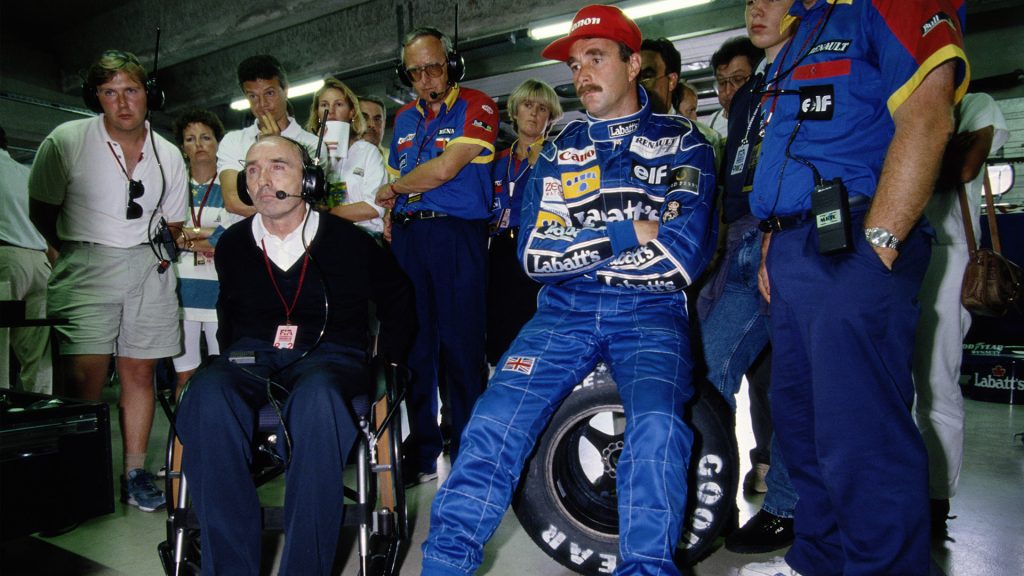
 After recovering from his accident, Frank Williams was right back in the paddock before the season was over. Seen here with future champion Nigel Mansell
After recovering from his accident, Frank Williams was right back in the paddock before the season was over. Seen here with future champion Nigel MansellFrank Williams ultimately oversaw 114 grand prix wins as team principal. He was active with both the F1 team and the business side of Williams until 2012, when he stepped down from the board of directors and nominated his daughter Claire for the vacancy. From 2013 to 2020, he was a co-team principal with Claire, running more of the engineering side of things while his daughter oversaw the drivers and business delivery side. When Williams Grand Prix Engineering was bought out by Dorilton Capital Group in 2020, both Frank and Claire stepped down, ending the Williams family tenure of the team.
Ultimately, Frank Williams oversaw 50 years of competition as a team principal, and his team and company dominated the sport for nearly two decades. He survived bankruptcy, he navigated the politics of Formula 1 with skill, grace, and determination, and he didn’t let the fact that he was tetraplegic get in the way of his desire to push for every win, and have the best of the best drive and engineer for him and the team. He was made a Commander of the Order of the British Empire in 1986 after his recovery from his accident, and was made a Knight Commander of the OBE in 1999.
Sir Francis Owen Garbett Williams, CBE, born April 16 1942, will be sorely missed, and left a lasting legacy in the sport he loved so dearly.
Official Formula 1:
We are filled with the most immense and deep sadness at the passing of Sir Frank Williams
His was a life driven by passion for motorsport; his legacy is immeasurable, and will be forever part of F1
To know him was an inspiration and privilege
He will be deeply, deeply missed pic.twitter.com/48JhruQpLK
— Formula 1 (@F1) November 28, 2021
Williams Racing:
A statement from Williams Racing. pic.twitter.com/urzeKUL7bx
— Williams Racing (@WilliamsRacing) November 28, 2021
George Russell, the last driver personally signed to the team by Frank Williams:
Today, we say goodbye to the man who defined our team. Sir Frank was such a genuinely wonderful human being and I’ll always remember the laughs we shared. He was more than a boss, he was a mentor and a friend to everybody who joined the Williams Racing family and so many others. pic.twitter.com/bWpFivpkmi
— George Russell (@GeorgeRussell63) November 28, 2021
Nico Hulkenberg (the Hulk), signed to Williams Racing in 2009:
Rest in Peace, Sir Frank Williams!
His legacy will be forever part of F1 and I will never forget the moment in 2009 when this Man opened the door to F1 for me. pic.twitter.com/xmhWDXR6A8— Nico Hülkenberg (@HulkHulkenberg) November 28, 2021
While the 2021 LA Auto Show (#laautoshow) continues to impress with its showcase of new game-changing cars from the world’s automotive heavyweights, Ferrari has decided to host an unveiling event of its very own making. Away from all the noise and fanfare of a hastily packed convention center, Ferrari today revealed its new Ferrari Daytona SP3 on its own terms, and own turf. The latest uber-limited-edition ‘Icona’ had its covers removed at Mugello circuit, where it was treated to a hospitable reception in front of a Tuscan backdrop during the 2021 Finali Mondiali.
Suffice to say, the Ferrari Daytona SP3 has a lot of really amazing things going for it, not least of which is its status as one of the Prancing Horse marque’s ‘Icona’ models (and the motorsport history that’s attached to them). The SP3 becomes the latest addition to a 3-car roster currently occupying this revered (and virtually untouchable) place in the Ferrari hierarchy. It also continues to embody the spirit of iconic sports-prototype racers from the mid-last-century, just as the Ferrari Monza SP1 and SP2 had done before it.
With immediate and total effect, the Daytona SP3 adopts its silhouette from a trio of Ferrari racing cars which participated in the 1967 24 Hours of Daytona—namely the 330P3/4, 330P4 and 412P. Not only was an outright Ferrari victory achieved here—with the cars managing an already notable 1-2-3 finish—but it also served as the ultimate retort for what had transpired at the 1966 24 Hours of Le Mans, where fierce rival Ford Motor Company, had achieved the same result with 3 of their GT40 race cars just a year before.
Now, back to the SP3; the car bears an obvious resemblance and is a modern-but-transparent tribute to those cars, most notably via its muscular wheel arches and mid-engine design. This does more than just harken back to years gone by, as the SP3 is also the most aerodynamically efficient car Ferrari claims it has ever produced. Remarkably, this is achieved without using the more contemporary methods of tacking on large rear wings, aggressive dive planes, eccentric splitters/diffusers and huge air vents on the fenders and bonnet. The Daytona SP3 also happens to feature a Targa-top design with a removable glass roof panel.
In fact, the body of the SP3 is incredibly streamlined and dare I say, minimalist for what it is—it appears this way, at least. Ferrari themselves probably said it better, stating that they intended to “create the impression of a light, radical, structured monolithic volume that lends the Daytona SP3 a look that is both futuristic and a nod to signatures from Ferrari’s DNA.” This begins with a monocoque chassis built using the latest Formula One technologies—something not done to this degree since the LaFerrari—then applying the most advanced and lightweight materials that can be afforded for a street-legal road car. Translation: all exterior body panels are composed entirely of the most finely-produced carbon fiber, resulting dry weight is 3,275 lbs.
Inside, the same philosophies are applied; retro design elements combine seamlessly with modern technologies. The most interesting feature in the cabin would have to be the seats, which are integrated into the cockpit and have their inner side bolstering fused over the transmission tunnel—another nod to sports cars from the 1960s era. The instrument cluster (and general user interface) is digital, and is indeed the very same one used on the SF90 Stradale hybrid hypercar; after all, a more analog approach on an 829 hp car equipped with Formula One technologies won’t do, and Ferrari has to draw the line somewhere, right?
If we’re honest, this car just wouldn’t make a whole lot of sense if it didn’t also come equipped with the most powerful (purely combustion) engine the company has ever made. Thankfully, Ferrari understand this as well as anyone else, and they’ve only gone and done just that, by mid-mounting the spectacular 6.5L naturally-aspirated V12 engine from the 812 Competizione into the SP3. Of course, it also has to make more power than the latter, so upgrades such as titanium connecting rods and a revised direct injection fueling system allow the SP3 to produce 829 hp, versus the mere 819 hp the 812 Competizione is able to muster.
The Daytona SP3 also retains the astronomically-bliss 9,500 rpm redline and mated to the engine is a 7-speed dual clutch transmission which is responsible for sending power to the rear wheels. In all, this allows the car to accelerate from 0-100 km/h in just 2.85 seconds, on its way to 200 km/h in only 7.4 seconds from a standstill.
As for pricing and availability, Ferrari has been unequivocal as one could be without needing to provide any firm numbers in terms of costs of production numbers. They’ve done so by stating that the Ferrari Daytona SP3 is “…aimed solely at Ferrari’s top clients and collectors, proud ambassadors for the Prancing Horse marque.” In Italian, I think that means it’s going to be really, really expensive, and that they’ll let you know if you’ve been selected as one of the very few privileged people on this planet to have a go at owning one. But if we were going to make any guesses here, expect unit production numbers to be in the low-hundreds and a (starting) purchase price in the $2-3 million USD range.
Late last month, we brought you coverage of Porsche’s confirmation that there would be a GT4 RS model after all. Not a whole lot was known at that time, though what was presented to us was more than sufficient in painting the picture of just how great of a car it was shaping up to be. The most noteworthy fact was that it set a blistering lap time of 7:04.511 at the Nürburgring Nordschleife. This is some 23.6 seconds quicker than the 718 Cayman GT4, suggesting that virtually no part of the car was spared the ‘RS’ treatment.
Now we know a lot more about the ‘how’ and the ‘why’, and Porsche has decided to provide those details to us as part of their participation in the 2021 LA Auto Show, alongside their unveiling of the new Taycan GTS models and the Panamera Platinum Edition. At the forefront of this is the GT4 RS’ engine. It was public knowledge that the powerplant would be a 4.0L naturally-aspirated flat-6 unit, likely a derivative (read: detuned version) of those used in current 992 GT3 and GT3 Touring. Porsche have certainly fulfilled these parameters. You can view a recording of the livestream event, below:
[embedded content] [embedded content]What was much less expected or known, was how the confirmed power figures would tally up. There were some suggestions that based on the Nürburgring lap time, as much as 500 hp would be on tap for the 718 Cayman GT4 RS. At the time, that still felt a bit farfetched for a number of reasons, the most notable of that being it would mean the new range-topping 718 would be infringing too deep into 911 GT-level territory. However, that prediction has essentially come good, with the GT4 RS producing 493 hp (500 PS)—the same as a 991.1 GT3 RS.
It revs to 9,000 rpm and makes a bit less torque—331 lb-ft vs 346 lb-ft in the 992 GT3—which Porsche says is the result of a more complicated exhaust design, but that’s not likely to matter in the grand scheme of things. After all, the platform known best for its extraordinary balance and superb handling dynamics, is still good from a blistering 0-60 mph time of 3.2 seconds in its new RS-guise. That’s plenty quick. As we correctly predicted, the GT4 RS comes exclusively with a 7-speed PDK transmission, which further highlights the car’s race-bred intentions and stays true to the (modern) ‘GTx RS’ mantra.
[embedded content] [embedded content]According to Dr. Frank Walliser—Vice President of 911 and 718 Product Lines—the GT4 RS will tip the scales at 3,120 lbs, making it around 49 lbs lighter than a similarly-equipped 718 GT4 with PDK. Much of the weight savings are the result of a healthy carbon fiber diet, with the front fenders, bonnet, door panels and other fixings now made from the good stuff. It will also sit 30 millimeters lower than a regular Cayman and now comes standard with a ball joint suspension system, replacing the rubber bushings used in previous models. The dampers, springs and sway bars have also been revised for more hardcore applications. All of these will afford the RS superior handling precision and a heightened connection with the tarmac.
At a glance, the biggest differences between the GT4 RS and the other models are ones that are visually telling, with the swan-neck rear wing being the most eye catching of its features. The rest of the body gets the typical RS workout, with streamlined underbody panels, a more aggressive (and adjustable) front splitter, a larger rear diffuser, side blades and huge air intakes, all forming part of this new equation. These of course, are all completely functional changes as well, with the GT4 RS able to produce up to 25% more downforce than the GT4, while also improving engine and brake cooling.
The new Porsche 718 Cayman GT4 RS is also responsible for a few important ‘firsts’ in the history of the Cayman. Besides being the platform’s inaugural RS representative, it’ll also be the first time the Weissach Package is offered for the model, following the trend made popular by the most recent GT3 RS and GT2 RS. The Weissach Package for the GT4 RS will use the same formula which incorporates exposed carbon fiber exterior panels, titanium exhaust tips, magnesium wheels and a roll cage (in jurisdictions where it’s legal to have one from the factory). Center-lock wheels are also a debutant feature on the Cayman, via the RS.
Compared to other trims, there isn’t a significant list of other notable options to pick from—notwithstanding front-axle lift, and a unique Porsche Design watch—because the RS already comes comprehensively equipped, as anyone buying a car with the badge should expect. I was also pretty bang on with my prediction in terms of pricing, with the base MSRP of the Porsche 718 Cayman GT4 RS sitting at $141,700 USD. Waiting lists are already looking long, relative to the number of allocations being given, so you should get your name in the hat now, if you’re interested in picking up Porsche’s latest—and arguably, their most impressive—RS model.
As part of their LA Auto Show appearance, Porsche has just unveiled their new Taycan GTS models. Available for both the sedan and new Cross Turismo body-styles, the GTS—as has been the tradition with other Porsche models—slots into the Taycan range between the 4S and Turbo trims. This also marks the first time that the venerable GTS badge will feature on an all-electric car.
[embedded content] [embedded content]Much like its GTS predecessors, this places the new model in that “sweet spot” within the existing roster. What this translates to for the Taycan GTS, is a model that continues to provide an exemplary performance package without the need to opt for the Turbo models, the latter of which tend to come with an excess of features (and with them, a higher price) that the typically-pragmatic GTS owner would rather forgo.
Just a cursory glance at the specs and features immediately suggest that the Taycan GTS also strikes that perfect balance of power and handling, making it not only the better choice as an everyday car, but arguably for the race track too. Both the Taycan GTS and Taycan GTS Cross Turismo come standard with the 93.4 kWh battery and carry over the 800-volt architecture. They also retain the same dual motor all-wheel drive configuration and produce 590 hp, compared to 426 hp and 670 hp in the 4S and Turbo respectively. This makes the GTS models good for 0-60 mph in 3.5 seconds.
Porsche also states that the GTS models incorporate the suspension setup from range-topping Taycan Turbo S, though they’ve also done further tuning and tweaking in order to optimize the geometry for the models and their intended audience. This should make it the most spirted trim in the lineup in terms of driving dynamics, road feel and responsiveness, making for a Taycan that is more driver-focused and fun to drive than any other model in the roster.
The Taycan GTS models also distinguish themselves visually, with the latest trim coming standard with the SportDesign exterior package along with special GTS logos. The side skirts, rear diffuser and window trim are also painted in high-gloss black as standard. The Cross Turismo GTS also differs from other CT models by having its rear spoiler painted to match the main body color, and most notably, there is an absence of plastic cladding over the wheel arches seen on all other trims.
Other distinctive standard features include larger front rotors (390 mm) than those on baseline 4S models (360 mm), and the GTS also has a unique Race-Tex interior that’s similar to what is seen in other GTS-badged Porsche cars. According to Porsche, the Electric Sport Sound is now “deeper and louder” from both inside and outside the car. Also standard fare are Adaptive Air Suspension, PASM, PTV Plus and Sport Chrono Package. Features such as PDCC, PCCB, 21″ wheels and rear-axle steering remain as options. Also exclusive to the GTS is the optional “GTS Interior Package” which includes deviated stitching, unique embroidery and matte carbon fiber finishes.
As for pricing, the GTS sedan starts at $131,400 USD while the GTS Cross Turismo has a base price of $133,300 USD. Porsche is taking orders right now, with deliveries scheduled to begin in the second-quarter of 2022.
Considering the total package, I believe that the Porsche Taycan GTS and Porsche Taycan GTS Cross Turismo models are the most impressive Taycan models to date. For most of us, this shouldn’t be surprising if even up for debate—after all, the GTS badge and the word “best”, have become somewhat synonymous over the past few years when it comes to Porsche cars. It’s definitely the one I would buy, if I had to do it all over again.
Amidst all the fanfare surrounding EVs—much of it starting from within Porsche’s own camp—the thought of the company’s flagship 911 model being subjected to some form of electrification has often been overlooked. This sentiment is overwhelmingly a reflection of enthusiasts and consumers who, deep down inside, are resigned to the fact that this is inevitable if the 911 lineage is to continue in the years and decades to follow. Porsche themselves though—reluctantly, or not—have already been hard at work embracing this notion, and are now showing tangible evidence of what the path forward will look like.
In my personal experience, I believe that Porsche’s fully-electric platform—exclusively represented by the Taycan range for now—provides very promising prospects and a solid template for a future with ICE-less 911 models. But that’s something we won’t have to think about much, at least for now, as hybridization, rather than full-on electrification, will be Porsche’s immediate solution to address the changing automotive landscape; and it’s more than likely that we’ll see this come to fruition during the current 992-generation.
To quell any doubts of this being the case, the proof is in the pudding, as they used to say. The video below (credit: CarSpyMedia) shows what conspicuously appears to be a 911 Hybrid being tested at the Nürburgring Nordschleife earlier this month.
[embedded content] [embedded content]As the video footage reveals, these are still the very early days of prototyping; the car appears to struggle from handling issues likely born from all the extra weight the car is carrying with the new hybrid system installed. We can all remain confident that Porsche will take the necessary steps to balance the car and engineer a happy medium between the chassis and its xeno-drivetrain—after all, they’ve already proven they can do as much via the 5,000 lbs+ Taycan platform.
Few details about the car are known, but we do know that Porsche’s ‘E-Hybrid’ nomenclature—currently used in the Panamera and Cayenne lineups—will be adopted for the 911 range. The first 911 trim likely to be ‘E-Hybridized’ will be the Turbo S model, and it will likely sit at the very top of the range in terms of price and overall performance. The current word is that Porsche 911 Turbo S E-Hybrid will feature a 400-volt system, which will compliment the existing 3.7L twin-turbocharged flat-6 petrol engine.
Some outlets are suggesting that it won’t be a plug-in hybrid model, though I’d be surprised if this was the case; the fully-electric Taycan uses 800-volt architecture, while conventional ‘mild’ hybrid systems (which aren’t plug-ins) are well under 100-volts. But then again, EV technology is improving at a rapid pace. As a hybrid, we can expect the new 911 to be mechanically the same, or similar, everywhere else. That should mean no changes in the transmission department, with a 7-speed or 8-speed dual clutch transmission sending power to all four wheels. The suspension and chassis are sure to be tweaked and tinkered with to ensure that the essence of the 911’s driving dynamics remain intact, if not enhanced, by the hybrid drivetrain—it should turn out to be the very same 911 that we’ve all come to love, only with some slightly different hardware.
Just how soon will the Porsche 911 Turbo S E-Hybrid be a real thing? We’re told that it’ll likely arrive as a 2023 or 2024 model, meaning it could debut as early as the tail-end of next year —yes, it’s coming that fast and just in time to usher in the ‘992.2’ era. Porsche has yet to officially confirm that such a car even exists, but as has been proven before—most recently with the new GT4 RS—actions certainly speak louder than words, or lack thereof. In fact, the 911 isn’t even the first Porsche model to feature in recent conversations with regards to hybridization or electrification; Porsche has already announced that it plans to introduce an EV to the 718 range no later than 2025.
My Thoughts:
While the development of eFuels is a positive step in extending the life of the 911 without having to consider full-on electrification, hybridization is a rather obvious next-step in the timeline of Stuttgart’s most iconic and long-standing model. The big-wigs at Porsche are already suggesting that this latest version of eFuels may even allow internal combustion cars to achieve a smaller overall carbon footprint than an electric car, particularly when taking into consideration, the byproducts created from battery manufacturing. “This technology is particularly important because the combustion engine will continue to dominate the automotive world for many years to come,” said Porsche R&D Executive, Michael Steiner. “If you want to operate the existing fleet in a sustainable manner, eFuels are a fundamental component.”
“Porsche is committed to three powertrains: purely electric, plug-in-hybrids, and highly efficient gasoline engines. From Porsche’s point of view, eFuels open up an opportunity for our plug-in hybrid models as well as our icon, the 911—either with a combustion engine or as a very sporty hybrid. This means that we could continue to drive the 911 for many years to come, which will certainly make our customers and fans happy.”
Either way, the existence of the combustion engine—either as a standalone unit, or complimented by electric motors—is realistically viable for “many years to come”, to quote Michael Steiner. For fans of the 911 this can only be good news; even if you’re not a fan of hybrids, today’s hypercars have certainly showcased how impressive the technology is from just a performance standpoint, and if the prospect of that (that being, a 1,000 hp+ Porsche 911 from the factory) doesn’t excite any car enthusiast, I don’t know what will.
It was only a few months ago that they announced the plans for a joint venture between Bugatti and Rimac, and recently, they officially announced the new company: Bugatti Rimac. The new company brings together two automotive powerhouses Bugatti and Rimac, creating a completely new powerhouse in the automotive industry.
Unlike Bugatti, Rimac is relatively new in the automotive industry, having only started 10 years ago by Mate Rimac as a garage start-up. It has now grown to be its own force, and now, it will be making a huge leap forward as it officially operates under the umbrella of Bugatti Rimac starting November 1, 2021.
The Rimac Group is the major shareholder in Bugatti Rimac having 55% stake in the company. Mate Rimac will keep his 35% share in the Rimac Group while Porsche has 22% of the company. Hyundai Group has also kept steady with 11% share, with the rest of the investors at 32%.
Rimac Group will keep 100% shares of Rimac Technology which oversees the development, production, and supply of battery systems, drivetrains, and other EV components that Rimac has built their reputation on.
Bugatti Rimac will be overseeing two automotive and technological trailblazers. Bugatti has a 110-year history of design, innovation, and engineering, matched with Rimac’s technical expertise and unquenchable thirst for innovations in the EV niche, are now brought together to conquer the hypercar industry.
Porsche will also be a strategic partner in the new company. Apart from the two managers, the Stuttgart based sports car manufacturer will be appointing two Supervisory Board members, namely Porsche AG Chairman Oliver Blume, and Porsche AG deputy chairman and CFO Lutz Meschke.
“I am convinced that we have found the right mix of experience and know-how, innovative strength and team spirit for the management. That’s why I’m very optimistic. And because the project is very close to my heart, I will continue to accompany it closely and passionately in the future,” Deputy Chairman of the Executive Board and member of the board for Finance and IT at Porsche AG, Lutz Meschke shared.
Bugatti Rimac has appointed Mate Rimac as its new Chief Executive Officer. Mate Rimac’s leadership and vision has seen the fledging garage startup grow into an exceptional industry force that it is today. As the current CEO of the Rimac Group, he will be overseeing both the Bugatti Rimac and the new division, Rimac Technology.
Currently, the headquarters of the new Bugatti Rimac will still be at its current base in Zagreb, Croatia. Eventually the new company will be moved to the €200M Rimac Campus which will also be the home of Rimac Technology.
Construction on the campus has now begun. Eventually, joint research and development for future Rimac Automobili and Bugatti hypercars will be done at the Rimac Campus. It is scheduled to open in 2023.
The latest technologies will be seen in the new state-of-the-art facility. It will be able to host 2,500 innovators and it will be the home of groundbreaking developments.
Bugatti Rimac currently has 435 employees in the new company. 300 are currently in Zagreb while 135 are currently in Molsheim, France. There will also be 180 people at the Bugatti Engineering’s Wolfsburg plant that will be supporting the new company. Rimac Technology will have more than 900 employees. Currently, the Rimac Group have more than 1,300 employees in their various locations.
Christophe Piochon is the new Chief Operating Officer at Bugatti Rimac’s new Board of Management. He was the Director General at Bugatti Automobiles.
Larissa Fleischer is the new Chief Financial Officer. She was Porsche’s Director of Digitalization, New Mobility, e-Mobility and Connected Car Controlling.
Emilio Scervo is the new Chief Technology Officer, having held the same position at Rimac Automobili.
For now, Rimac Automobili and Bugatti Automobiles will be operating and working as separate brands and manufacturers. They will also be keeping their production facilities in Zagreb and Molsheim, respectively. The same will be done for their distribution channels.
Rimac Technology will keep on innovating and developing vehicle systems and technologies for global OEMs. These same technologies may also be used in future Bugatti and Rimac models.
Bugatti Rimac CEO, Mate Rimac shared, “I am honored to be leading this new fusion of automotive minds and begin what will no doubt be a successful, revolutionary and exciting new chapter for everyone involved. I am also extremely curious to oversee the profound impact Bugatti Rimac will have on the industry, and I look forward to developing innovative new hypercars and technologies.”
Today, Chevrolet unveiled its new range-topping Corvette Z06 model. This marks the return of the Z06 moniker – and all the amazing things it has always stood for – for the first time in the latest C8-generation of their infamous sports car (turned mid-engine supercar). During the livestream, the world got its first look at the most track-focused and performance-oriented iteration of the American automaker’s halo product, with basketball superstar Devin Booker and automotive personality Emelia Hartford co-curating all the latest revelations to a global audience.
“A global supercar, which is tantalizingly attainable.”
– Justin Bell, former British race car driver
The team in charge of the development of the Z06 are confident that their latest model will elevate the car to true global superstar status; for the first time, the automaker will be producing right-hand-drive versions of the Corvette to cater to overseas customers, of whom are already demanding more than what the company says they can readily supply.
You can tune in to the recording of today’s unveiling event on YouTube, below.
[embedded content] [embedded content]“It’ll perform with the best of the best worldwide… bringing all of our track experience to the everyday enthusiast.”
-Tadge Juecther, Corvette Chief Engineer
In the months prior to the camo coming off, we’d been teased with a couple video snippets of what the new Z06 has on tap; and Chevrolet has made it abundantly clear that their latest Corvette model is a derivative of their latest race-bred technologies and unyielding philosophies. More recently, another promo video made a brief nod to the new Z06’s flat-plane crank engine – dubbed the LT6 – being able to rev all the way to 8,600 rpm. The design team was tasked with achieving this without the use of forced induction (like how a supercharger was used in the previous-gen Z06), and blimey the naturally-aspirated unit sounds fantastic. This is in large part due to a specially engineered “reverse megaphone” exhaust which provides harmonic bliss for the driver and cabin, and for those admiring from the outside.


We now know that the 5.5L naturally-aspirated V8 produces 670 hp @ 8,400 rpm and 460 ft-lb of torque; this is in fact more than that of the C8.R race car (also seen in the video material linked above), which is limited to 500 hp due to IMSA regulations. Aluminum forged pistons and titanium connecting rods are used to enhance the Z06’s performance potential and provide drivers with the ultimate in “mechanical feel”.
Handcrafted by Chevrolet master technicians, the engine pulls strong throughout the entire rev range and is the most powerful naturally-aspirated V8 engine in a production car; not just in a Corvette, but in any car around the world, mind you. This all-modern all-American V8 is mated to an 8-speed dual-clutch transmission which sends power – in a much more traditional sense – exclusively to the rear wheels. Chevrolet has claimed that 0-60 mph in 2.6 seconds is attainable with the Z07 Performance Package included (more on that below).
“The LT6 truly opens the doors to what we can do with a small block V8.”
“Even though the numbers are incredible, it’s not really a numbers car.”
-Tadge Juecther, Corvette Chief Engineer
The architecture for the Z06 has been recalibrated and fine-tuned in order to extract the full performance potential of the Corvette chassis. For starters, this means a 3.6″ wider stance than the Stingray, with redesigned body panels fashioned to accommodate it; and for the first time, the Z06 will feature a standard double staggered wheel/tire setup from the factory which features 20″ (front) and 21″ (rear) wheels, with 275-series and 345-series tires fitted on them respectively. This design takes full advantage of the C8’s rear-biased weight distribution, helping to put power to the ground with greater efficiency than any other Corvette road car before it.
The available Z07 Performance Package really takes things to the next level, and has been specially made for those who are looking to maximize the Z06’s abilities on the race track. Amongst the equipment included are carbon fiber wheels (which shed 41 lbs of unsprung weight compared to the standard forged aluminum wheels), carbon ceramic brakes and Michelin Pilot Sport Cup 2 tires. It also incorporates the otherwise optional Aggressive Aerodynamic Package, which adds a v-shaped carbon fiber rear wing, front dive planes and a more aggressive splitter. When equipped with the aforementioned hardware, the Z06 can produce up to 734 lbs of downforce at 186 mph, though unfortunately, the rumors about there being certain “active” aerodynamic elements, didn’t come to fruition.
“It has all of those feelings of a race car… fundamentally, it’s a race car you can drive on the road.”
– Ollie Gavin, legendary Corvette Racing driver
“We respect our past, but we’re always moving forward.”
-Tadge Juecther, Corvette Chief Engineer
Many of us are still lingering in the “hangover” phase, since the day Chevrolet transformed the Corvette into a mid-engined supercar; one that has become much more a contemporary of European flair, than American pragmatism. Nevertheless, those of us who have gotten over it will be more than delighted with the trajectory on which the Z06 continues to take the C8 platform.
In spite of its performance-biased nature, Chevrolet will offer the Z06 in both coupe and convertible configurations – important for traditional fans of the brand – with a plethora of exterior colors, interior packages, and wheel packages offering no shortage of possible permutations. There’s room for generous servings of carbon fiber inside and outside the car, including a carbon roof and carbon interior accenting. You can also spec your Corvette with luxurious leathers, with the Adrenaline Red Leather Trim Package adding both popping-contrast and sleek refinement to the cabin. Chevrolet says that there are more than 11,000 unique combinations of options to make the car bespoke to your personal tastes.
Regardless of how you end up customizing your Z06, there are some things which will be standard for all cars. This includes larger wheels, beefier tires and a wider stance compared to that of the Stingray. Flared quarter panels and front fenders, along with unique and exclusive Z06 front and rear facias, further set the car apart from the rest of the C8 lineup. Replaceable spoiler wicker bills, rear brake cooling ducts, a removeable front fascia panel and front underwing stall gurneys all serve the important purpose of increasing downforce, reducing drag and cooling drivetrain and brake components. The aforementioned Z07 Performance Package turns all of that up to 11, while providing the Z06 with a much more aggressive and purposeful silhouette.
Inside, expect features such as the 12.0″ digital gauge cluster, heads-up display, heated and ventilated seats, and Apple CarPlay/Android Auto to be standard. Two tiers of Bose stereo systems will also be offered to enhance the grand touring experience, while a Performance Data Recorder is also available for those who wish to analyze their driving on the race track (or public roads too, if that’s your thing).
Chevrolet has stated that production of the Corvette Z06 will begin in mid-2022 and that the car will be designated as a 2023 model, so we can expect the first deliveries to start trickling in by next summer. The official website suggests that they’re currently entertaining “inquiries” for the Z06 – and you can even start designing your own – although no official word on pricing has been publicly provided yet.
For now we can only speculate, and if past performance is the best indicator of future performance, then we should expect the new Z06 to start at around $90,000 USD; this would put it at about $30,000 more than the base car’s starting MSRP, which seems reasonable based on statistics and history. This is of course before any of the boxes for optional hardware are ticked, but the car remains an absolute bargain for everything that’s on tap, nonetheless.
“The Z06 is the next chapter in a very long book.”
It feels like yesterday when Chevrolet had released their new mid-engine performance car, in the process breaking with the decades-old convention of what the Corvette has always been. That was a feat on its own, as the world witnessed the moment with delight; and now, the Corvette Z06 has arrived to elevate our senses to a whole new level. Like every C8-generation model before it, the Z06 allows the Corvette to punch well above its weight class and take on much more expensive (but not necessarily more sophisticated) competition.
The Z06 looks to take this fight to our favorite stage – the race track – where it can have uninhibited access to its exotic-slaying arsenal, and go toe-to-toe with the very best high-performance road cars on the planet. With its 670 hp flat-plane crank V8, unbelievably attainable exotic performance, and near-unlimited customization options, there’s no reason the 2023 Chevrolet Corvette Z06 won’t become an absolute hit amongst impassioned loyalists, data-driven pragmatists and everyone in between – it’s a true winner in every regard.
Under similar pretenses, the Honda NSX forever altered the supercar landscape back in 1990. Will the latest Corvette do the same today? It sure as heck looks like it.
For those not in the know, Kyalami Green in Audi-speak is a bright shade that closely resembles Porsche’s more aptly-descriptive Viper Green. That name at least tells you this is a green hue with fangs—a green that stands out like no other and which attracts the attention of others.
While reviewing this car, I was even asked by two gentlemen in the supermarket car park if they could photograph it. And on my return, there was a middle-aged lady hovering around Ingolstadt’s fiery little coupe, muttering flattering words in its direction.
Hoping some of the compliments might have been aimed in my direction, I said to this lady how unusual it was for a grey-haired old codger like me to be piloting a sporty machine decked out in such a daring colour. “Ah no,” she opined, “you look cool in it!” Happily, my wife heard every word but pretended not to have done so—although she did admonish me for having the drive mode set in DYNAMIC, which maximises all the stunning aural effects that envelop the TTRS on the move.
On a more serious note, it’s not just the colour that attracts the eye in the case of this Audi supercar. It’s as much the simply fabulous, glossy paint finish and the wafer-thin shut lines together with the beautifully detailed (optional) gloss black trimmings that all combine to massage the senses.
The basic shape of the TT is familiar enough, having retained most of the eye-catching yet simple elements of the revolutionary original, and although its dimensions have grown across the three-and-a-bit generations that have followed, it remains a compact sportster endowed with decidedly cosy cabin dimensions exaggerated by the marked roof curvature and long, sloping tailgate.
As you might expect, opening and shutting the two hefty doors is a pleasure, thanks to the reassuring thunk they make and the precision feel of the process—the effortlessness of which almost seems surreal within a structure solid enough to make a Tiger tank feel like a packet of corn flakes. All of this simply reinforces the feel good factor.
For those lucky souls who enter the cabin, there are even more details to appreciate. Take a close look inside the door jambs and around the sills and you’ll notice that the paint finish is consistently flawless (and that nasties such as spot weld points are absent).
This fastidious detailing is maintained throughout the cabin, which in this instance featured gorgeous quilted nappa leather and alcantara seating, as well as acres of soft-touch surfacing and a mix of textures including (optional) carbon fibre.
It’s certainly a cosy environment, although the low seating position and proximity of the beautifully lined roof ensure that entering and exiting needs a conscious effort for a frame as well worn as mine.
Finding a perfect driving position is not difficult though, thanks to the multi-adjustable seating and leather-wrapped, flat-bottomed steering wheel, which also sports alcantara inlays (as does the stubby shift lever).
This is what I call, in relative terms, old school Audi detailing. Hard surfaces are hard to find, and rotary MMI controllers and tactile switch gear provide functionality beyond mere touch. This makes operating the brilliantly informative and clear multi-functional driver display more intuitive than might be the case in some of the later Ingolstadt productions, where the eye needs to wander off the road. Truth be told, though, the ambience of the TT is not so much luxurious as it is clinically precise.
The extent of the information on display is terrific and includes:
Naturally, there’s also cruise control on board, along with keyless stop/start, auto air con, electric folding mirrors (optional gloss black in this instance), and electric one-touch windows.
Two occupants will enjoy the low-set front pews that offer more support than observation alone might suggest, but the vestigial and very upright pair of seats in the rear are there to transport wee ones on urban hops only. They’re much more useful when folded to extend the surprisingly capacious (if shallow) load area that provides 305L (10.77cu/ft) with seats in place.
Those fortunate enough to own a set of keys for such a sporting bolide will be much more interested in what lurks under the clamshell bonnet, and here the TT RS truly excels. The straight-five injected and turbocharged engine has been refined over the years, during which time it has earned a multitude of international awards.
Notwithstanding its ballistic 294kW (395HP)/480Nm (354lb/ft) peak outputs, it idles with unusual smoothness and lack of aural fuss. But give the gas pedal a decent prod and those five cylinders, with their unusual firing order, transform into a snarling, mildly off-beat symphony that’s sure to be accompanied by the broadest of smiles and simply devastating forward momentum.
Audi’s famed quattro driveline ensures that no energy is fruitlessly expended in spinning wheels as the scant 3.7 second 0-100km/h (62.2 mph) elapsed time indicates—but this diminutive coupe does more than scamper off the line like a scalded hare.
With the aid of a slick and decisive 7-speed dual clutch S Tronic gearbox that’s very willing to drop cogs in DYNAMIC mode in particular, this engine has muscles to flex from as low as 2000rpm. Traversing urban roads with constantly variable traffic flows never triggers a feeling of lethargy from the five-pot mill.
Indeed, it is rarely necessary to employ the services of the wheel-mounted paddle shifters, since the transmission boasts sufficient grey matter to do the right thing most of the time. If the mood arises, though, using a heavy foot and flexible fingers to work those shifters really does produce the most electrifying performance—aided by activating the sound flap in the exhaust system, which terminates in two large circular pipes that warn would-be-challengers to approach with caution.
For the record, this test unit featured the deletion of the usual 250km/h (155mph) speed limiter to allow for a top speed of 280km/h (174mph).
This car’s straight line performance is nothing less than electrifying, as are the brakes. But the RS does more than leave vapour trails in its wake, as its small dimensions, huge 255/30ZR20 Pirelli P-Zeros, quattro drivetrain, inherently stiff springs, and (optional) adaptive suspension prove. All these inputs combine with surprisingly responsive steering to produce a machine that can change direction with pleasing certainty, backed by limpet-like grip.
Sure, it’s not a scalpel in the mould of a Porsche Cayman, but to expect such precision would be a tad unfair, given that the Audi’s underpinnings owe more to a Golf hatchback rather than an out-and-out sportscar. What it offers is a ride, even in the sportiest setting, that feels distinctly firm—but with a measure of pliancy that blunts the worst effects of sharp ridges and deep-set manhole covers (even if it doesn’t entirely eliminate them).
As might be expected, that sport-biased rubber can set up a bit of a din on coarse tar. But in cruise mode on smoother surfaces, the TT RS is decently refined, thanks to excellent suppression of wind noise and an almost total isolation of mechanical interference—until that gas pedal is exercised in a downward direction!
Speaking of gas, the RS recorded a fuel consumption of 11.9L/100km (19.77mpg (US) over a weeks’ varied use with plenty of urban running and bursts of acceleration thrown in. However, a specific motorway check over 30-minutes’ running at around 130km/h (80mph) produced a most encouraging 8.2L/100km (28.68mpg (US).
Sadly, it seems this Audi TT RS will be the last of the breed, as politics and a change of priorities in the world of car manufacturing will soon see the end of fossil fuelled vehicles, especially those of this ilk. Anyone seeking a last chance to take ownership of a surprisingly practical compact sports coupe with stunningly classy build quality and a level of performance almost unmatched in this price range should take the bull by the horns without delay. If all these gloomy predictions do indeed come to pass, then the RS is a truly marvellous swansong for the TT concept.
Porsche has confirmed under no uncertain terms that there will be a 718 Cayman GT4 RS model. This comes after many months of testing camouflaged mule cars (with accompanied spy shots) which had long hinted that the GT4 RS was going to be a real thing – we finally know that this will indeed be the case. Porsche has stated that they are in the process of wrapping up the final stages of testing.
As part of the first phase of this official news, Porsche has released the first sans-camo photographs of the car. Beyond that, not much is really known about the car – that information will be revealed in November, when the car is scheduled to have its full unveiling ceremony. However, we do know one very important thing for sure: it set a blistering lap time of 7:04.511 at the Nürburgring Nordschleife. This is some 23.6 seconds quicker than the 718 Cayman GT4, suggesting that virtually no part of the car was spared the ‘RS’ treatment.
[embedded content] [embedded content]The GT4 RS will come equipped with a 4.0L naturally-aspirated flat-6, though Porsche has not yet provided any horsepower figures. Besides being obviously more than that of the GT4, many media outlets are predicting that it could make as much as 500 hp, especially considering the measurable difference in their ‘Green Hell’ lap times. Other telling differences can spotted visually, with the GT4 RS being subject to the customary aerodynamic transformation. This includes a more aggressive front splitter, front fender vents, and a swan-neck rear wing (similar to that of the 992 GT3).
As the ultimate performance model in the 718 range, the GT4 RS will likely follow suit with other existing ‘RS’ models and come exclusively with the PDK transmission. Those who would prefer to opt for a manual transmission will probably have to look at the regular GT4, or wait for Porsche to release some sort of 911R-equivalency for the GT4 RS. On similar grounds, the possibility of a Boxster Spyder RS is also highly unlikely.
Lastly, pricing; yes, we’re still waiting for more details on this subject as well, and it could be a particularly tricky one to predict in the meantime. Needless to say, the GT4 RS is not only well within 911 territory, but it is also just steps away from infringing on the latest GT3. It’s obviously not going to be priced the same as the latter – that would be marketing suicide – but it may as well come pretty close. It’ll be somewhere between the price of a GT4 ($100,200 USD) and GT3 ($161,100 USD), likely on the higher end. Our guess would be a base price of around $140,000 USD. We look forward to providing more details as they become available.









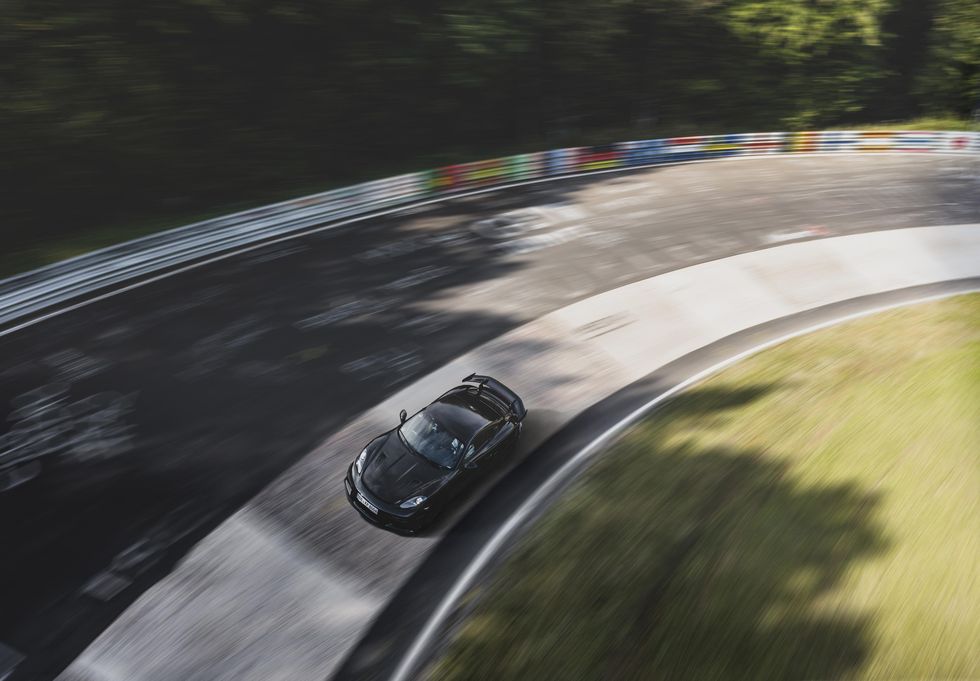

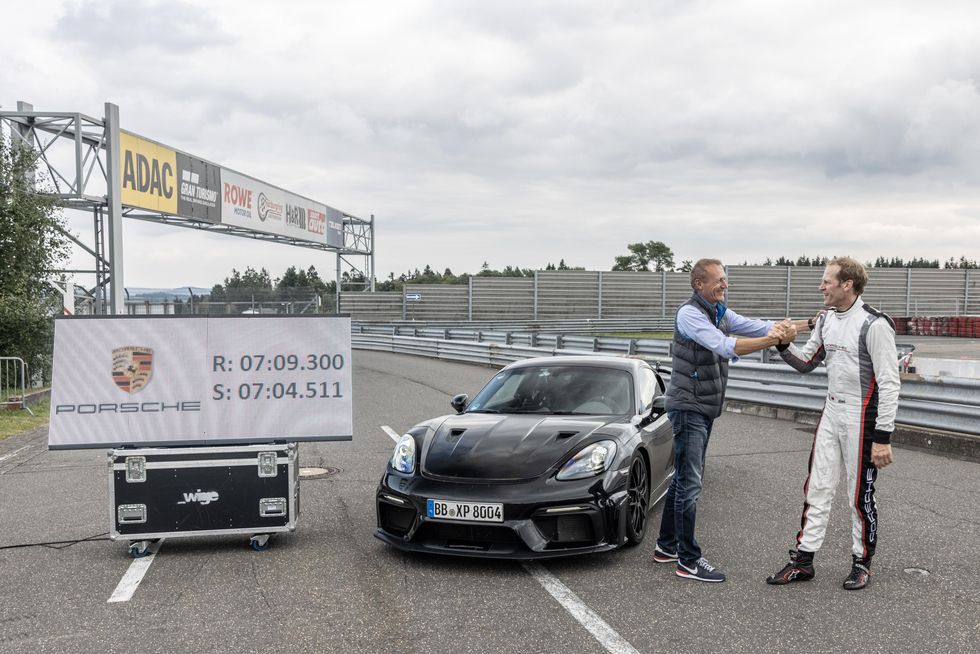

The organizer of the Geneva International Motor Show (GIMS), Comité permanent du Salon international de l’automobile has recently announced the postponement of the event to 2023. The event was postponed due to the industry-wide issues that is directly related to the COVID-19 pandemic. Although the February 2022 event has been cancelled, steps have already been taken to improve the platform and it will continue to be implemented to be able to create a more impactful show come 2023.
The best interests of both the car manufacturers and the automotive fans were at the forefront with regards to the decision to cancel GIMS 2022. The organizers were left with no alternative due to the direct and indirect issues that were plaguing the event due to the ongoing COVID-19 pandemic.
The direct issues that the organizers had to face were the continued travel restrictions that visitors, journalists, and international exhibitors had to face. Some of the indirect issues brought by the pandemic include the semiconductor shortage, which has given car manufacturers new issues that they would have to prioritize and resolve first. The said issues ended with recent cancellations to the event, so the organizers have decided to formally confirm and announce the postponement of the event.
Comité permanent du Salon international de l’automobile President Maurice Turrettini shared, “We have pushed very hard and tried everything to reactivate the Geneva International Motor Show in 2022. Despite all our efforts, we have to face the facts and the reality: the pandemic situation is not under control and presents itself as a big threat for a large indoor event like GIMS. But we see this decision as a postponement, rather than a cancellation. I am confident that the Geneva International Motor Show will come back stronger than ever in 2023.”
Geneva International Motor Show CEO Sandro Mesquita stated, “Many exhibitors have indicated that the uncertainties caused by the COVID-19 pandemic make it impossible for them to make a firm commitment for GIMS 2022. On top of this is the negative impact that the current shortage of semiconductors has on car manufacturers. The chip crisis is likely to drag on well into next year, with negative financial implications for OEMs. In these uncertain times, many brands are therefore unable to make a commitment to participate in a trade fair that would have taken place in just over four months. When considering all the factors, it became clear that it was necessary to postpone the show, and to announce the news sooner than later to avoid cancelling at short notice.”
The excitement over the new GIMS platform has been building up for the past several months as it promised to engage more people all over the world with its new digital ecosystem, providing an overall enhanced experience. The platform is still being processed to carry it to its full potential for the 2023 event.
The Geneva International Motor Show is a much awaited annual even by automotive enthusiasts since well-respected marques normally reserve the prestigious event to launch their latest sports cars and supercars.
Back in 2020 famous hypercar make Bugatti unveiled something really special … La Bolide. A design exercise from the Bugatti Atelier to show what they could do if they had a brief to design the best, fastest, no-bars held hypercar that had to adhere to no regulations whatsoever … neither for the road nor for the track, the result was the most radical-looking Bugatti ever with a massive power output of 1825 hp.


But La Bolide was a design concept, fully driveable, but just a test mule for a ‘what if’ question … until Pebble Beach 2021, when Bugatti Automobiles S.A.S. revealed they would turn the La Bolide into a limited edition production car, still track-only, but at least some high-net-worth individuals would be able to obtain the best of the best from the Bugatti Atelier in Molsheim.


Only 40 units of the Bugatti Bolide will be made for the entire world, and chances are that by the time you are reading this, all of them are sold out already with a price set at €4,000,000 before taxes, that’s about $4,700,000 in the United States of America. Power comes from the famous W16 engine, which on 110 Octane racing fuel is capable of 1,850 PS, but it seems the production version will be set to 98 RON fuel, which compromises power to ‘only’ 1,600 PS, keep in mind this Bugatti comes with a monstrous torque output of 1,600 Nm at just 2,250 rpm … that will rip up the pavement for sure.
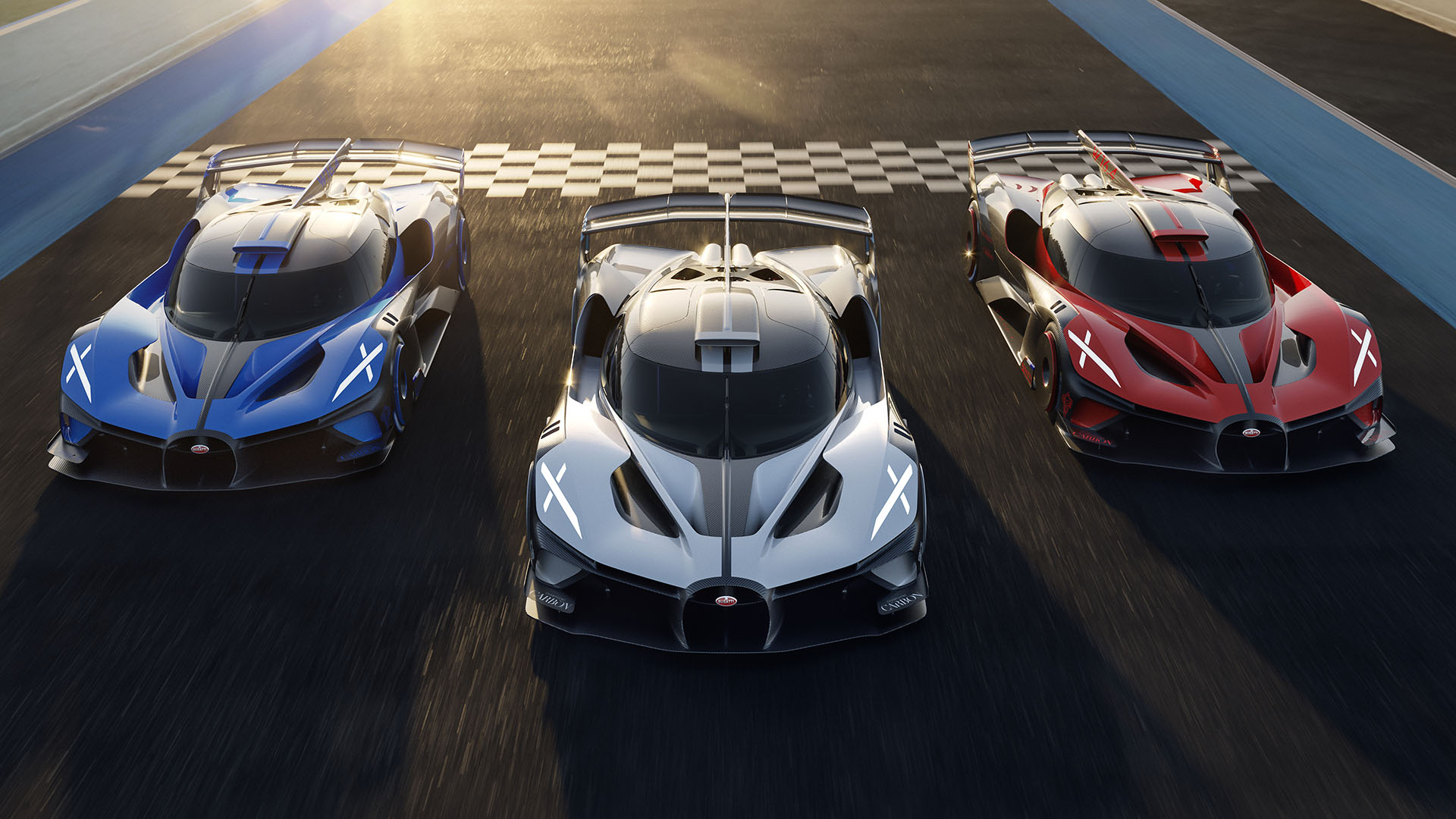

At the 36th Festival Automobile International de Paris, an expert jury comprised of design professionals selected the La Bolide from Molsheim as the world’s most beautiful hypercar, taking the victory in the ‘Hypercars’ category by a substantial margin, among a total of four finalists. “It’s an honour for us that the resulting design has won such a highly coveted award, voted for by experts in our field. Praise must go to the entire design team, each dedicated to their craft in harmonizing and perfecting all aspects of the Bolide’s design during an innovative four-months, purely digital process” explains Bugatti Design Director Achim Anscheidt.


It will take the development team at Bugatti three more years to create a production-ready version of the current experimental concept, but they promise the final car customers will be receiving by 2024 will be very close to the prototype we can admire today, with very few changes, technically or visually. The intention is to optimize the areas of design, aerodynamics, quality, and safety for a production version of the Bugatti Bolide with a weight of just 1,450 kgs to achieve a weight-to-power ratio of 0.9 kg per PS when 98 RON gas is used.


“Although extremely functional, the Bolide is brimming with Bugatti’s distinctive personality and tradition. Its creation was inspired by the weight-to-power philosophy of a young Ettore Bugatti, who upturned the world of motorsport in the 1920s by designing lightweight and nimble cars, such as the Type 35, that became practically unbeatable. Bolide is the ultimate culmination of that philosophy, pure in its design and its purpose. Just like those early 1920s racers, that purity brings with it an inescapable beauty,” explains Nils Sajonz, Bugatti Design Head of Special Projects.
Enjoy some more photos of the aggressive but beautiful and instantly recognizable as a Bugatti, La Bolide:


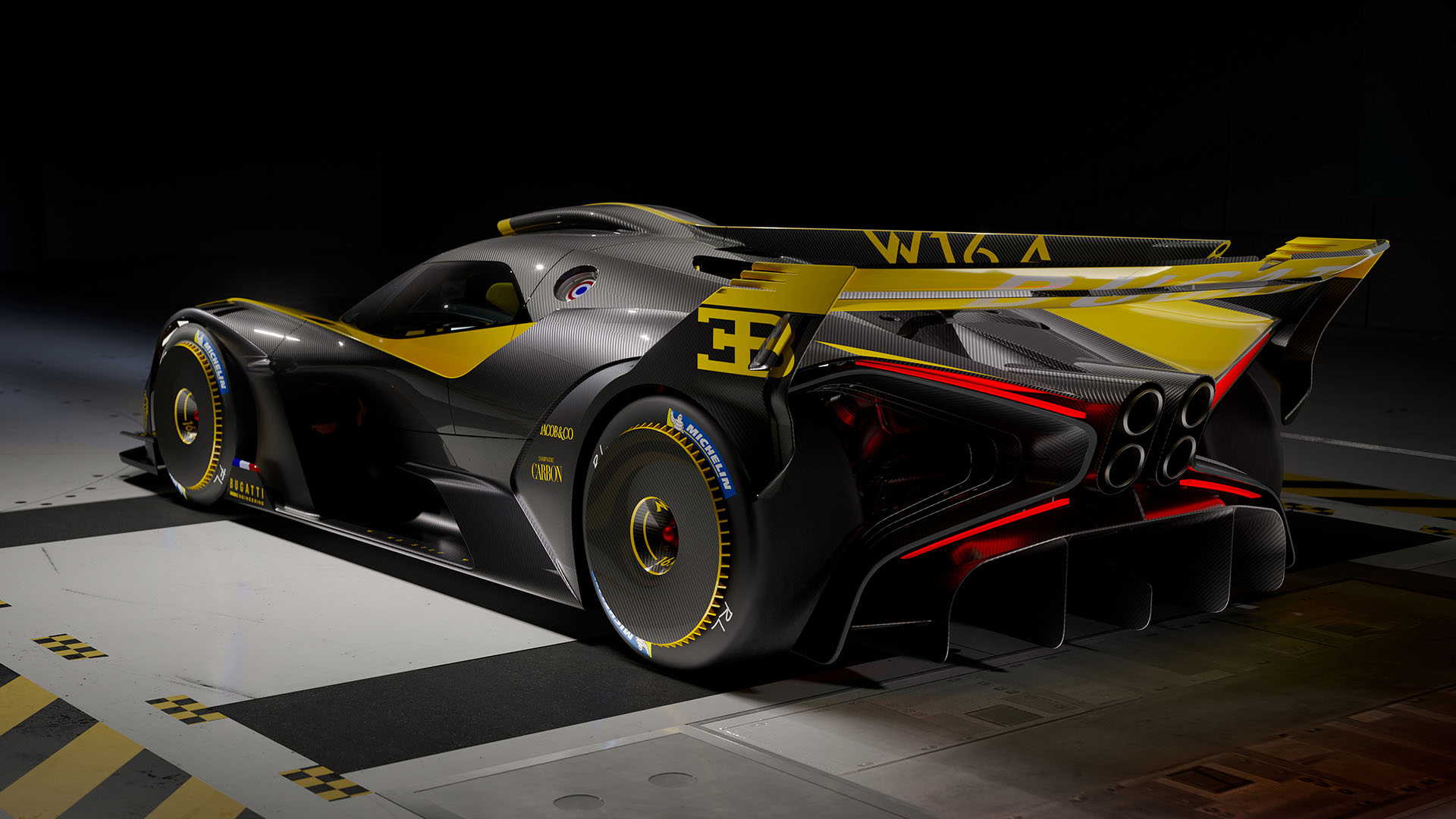

The latest James Bond movie is about to be released at the time of writing, and while Aston Martin themselves have already started their No Time To Die campaign by putting a 1:1 scale replica of the famous Bond DB5 inside a giant Corgi Toys box, there are others that plan to ride the James Bond wave this new movie will cause, just check out this amazing silver metallic DB5 Convertible ‘No Time To Die Edition’ … but it might not be what you would expect …
What you are looking at here is actually a two-thirds scale replica of the iconic Aston Martin DB5, all-electric by the way, created by ‘The Little Car Company’ together with Aston Martin and EON Production … only 125 units of this very special Aston Martin DB5 Junior No Time To Die Edition will be made worldwide, and it does include some of those famous Bond gadgets.

 © 2021. All rights reserved. The Little Car Company. The Ferrari Testa Rossa J is hand-built in the UK under license by The Little Car Company. Use of the Ferarri brand is with permission of Ferrari s.p.a
© 2021. All rights reserved. The Little Car Company. The Ferrari Testa Rossa J is hand-built in the UK under license by The Little Car Company. Use of the Ferarri brand is with permission of Ferrari s.p.aThe Little Car Company has a very interesting catalog of amazing classic cars, downscaled to be enjoyed by not only children but their parents too. How about a 75% reproduction of the legendary Ferrari 250 Testa Rossa, called the Testa Rossa J, and limited to 299 units, they even have a complete configurator online to create your bespoke Testa Rossa J in just about any color you like.
But it gets even better, with the Bugatti Baby II, another 75% scale model, but this time of the 1920’s Bugatti Type 35, probably the most successful race car of all time with about 2,000 wins under her belt, but the story gets more interesting when Ettore Bugatti built a half-scale replica for his son Jean’s fourth birthday. Intended as a one-off, customers convinced Ettore to start building this smaller-scale version too, and in the end about 500 units were made almost a century ago.

 © 2021. All rights reserved. The Little Car Company. The Bugatti Baby II is hand-built in the UK under license by The Little Car Company. Use of the Bugatti brand is with permission of Bugatti Automobiles S.A.S.
© 2021. All rights reserved. The Little Car Company. The Bugatti Baby II is hand-built in the UK under license by The Little Car Company. Use of the Bugatti brand is with permission of Bugatti Automobiles S.A.S.Today you can get a more modern version, which happens to be a little larger too, as a three-quarter Bugatti Baby II model from The Little Car Company, again limited to only 500 units, available in many different colors, this new Bugatti Baby II is a rear-wheel drive, battery-powered car that can reach a top speed of about 20 km/h in ‘novice mode’ but this can be raised to 45 km/h in export mode … the Baby II even comes with a ‘Speed Key’ like the Chiron, which releases 10kW and no speed limiter.


But back to the Aston Martin DB5 Junior now, and while we will discuss this new limited edition ‘No Time To Die’ version next, first let’s take a look at what The Little Car Company offers in their DB5 Junior range too, at a more democratic price. With a battery-powered engine delivering 5kW or 6.7hp from a 1.8kWh battery the base model DB5 Junior is listed at £35,000 (US$ 50,000) before options, but just like the big brothers from Aston Martin, you can opt for a DB5 Vantage Junior which comes with two batteries and doubles the power output to 10kW (13.4 bhp) and even comes with a limited-slip differential … at £45,000 ($62,000).


But we are here for the piece de résistance, the DB5 JUNIOR No Time To Die Edition that starts at £90,000, so about $125,000 … for a toy car … or is it. No, this 2/3rd scale replica is much more than a toy, this very special model is limited to just 112 units and comes with a massive power upgrade compared to the Vantage edition. Now 4 1.8 kWh batteries get installed delivering 16kW of power or 21.5 bhp that pushes this electric car up to 45 mph … this isn’t a toy anymore.
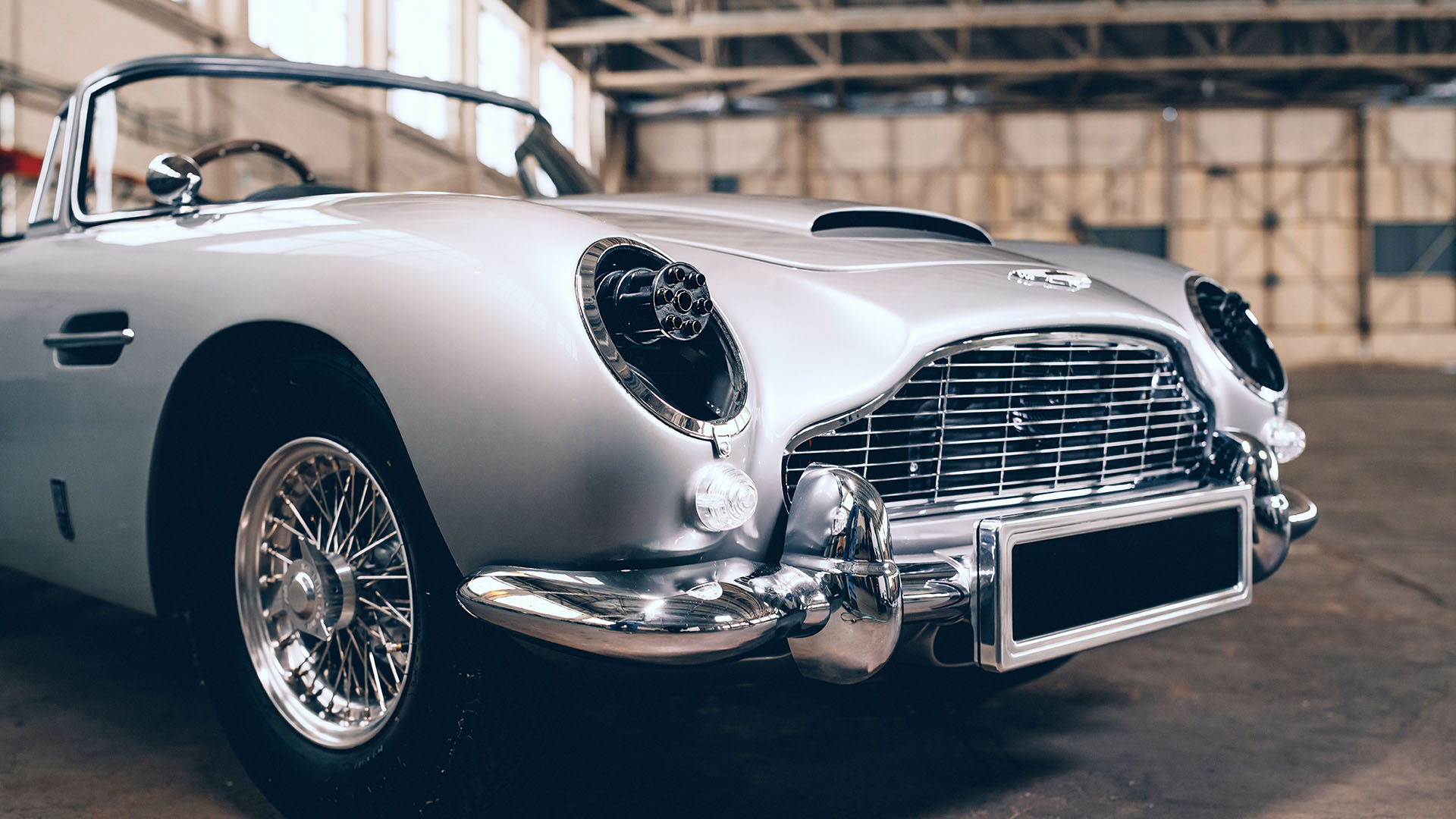

But wait, there is more, we are talking about a James Bond special edition, so that comes with Gatling guns behind the headlights, digital revolving license plates, a smokescreen generator, a hidden switch panel for the gadgets, and even a Skid mode, and while the real Aston Martin DB5 driven in the movie is a coupe, this one comes as a convertible, as this allows the child to be accompanied by an adult sitting side by side.


The paint on this Aston Martin DB5 Junior No Time To Die Edition is the period-correct Silver Birch while for the dashboard the correct Smiths instruments are fitted, being a limited edition, there are individually numbered chassis plates and genuine Aston Martin badges on this two-thirds replica.


Further testament we aren’t talking about an expensive toy here is the fact they did a 3D scan of a real Aston Martin DB5 to create this smaller-scale version, and while it’s electric, the fuel gauge has been replaced by a battery meter, but in their effort to create a safe car for a child to drive, they also fitted Brembo disc brakes, which regenerate when braking while Bilstein dampers and coil-over springs can keep up with the performance.
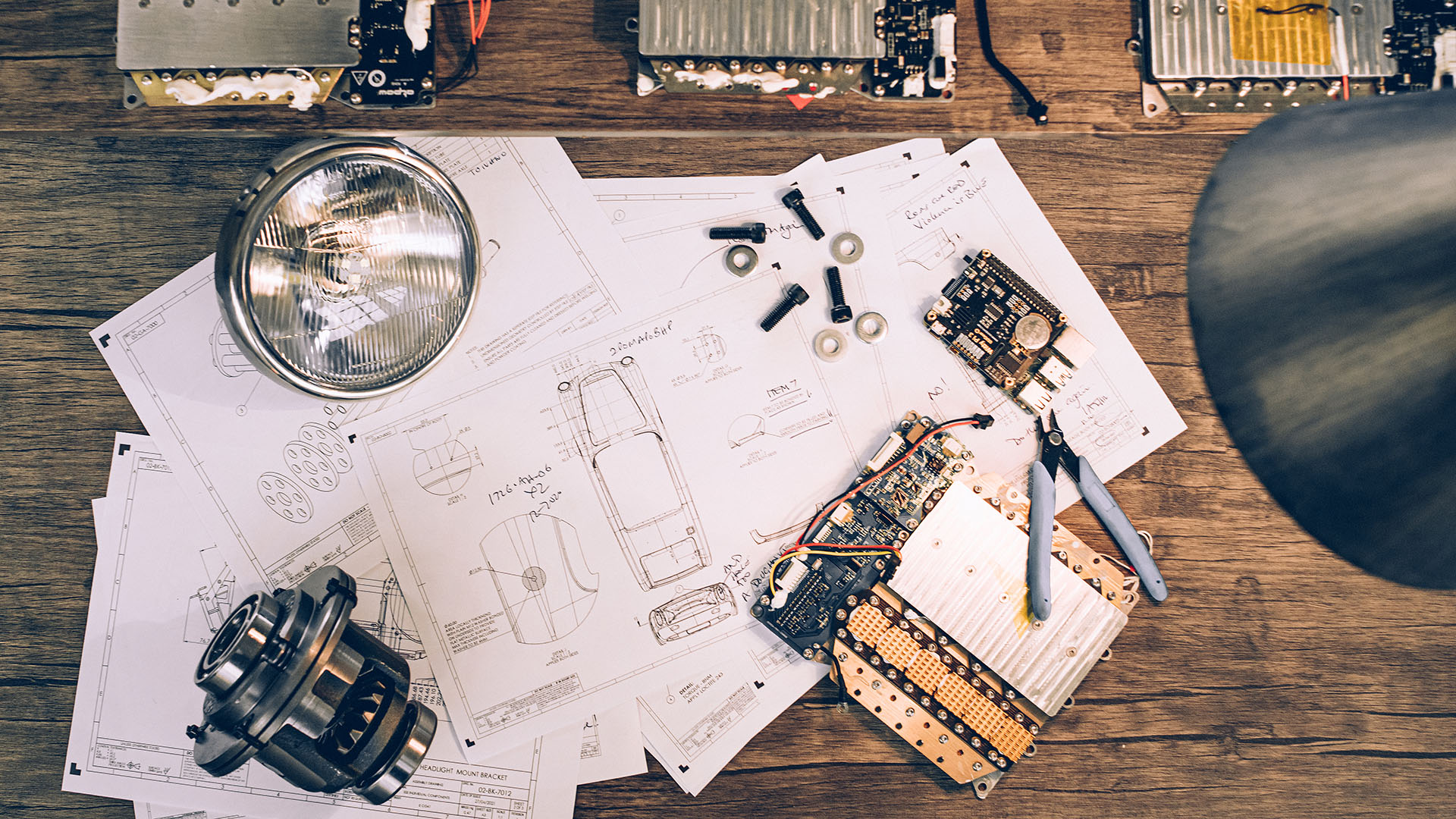

Ben Hedley, CEO of The Little Car Company, said: “Regarded as the most famous car in cinematic history, the gadget-laden Aston Martin DB5 awed audiences around the world over fifty years ago. Now, that story continues. As part of an exclusive partnership with EON Productions and Aston Martin, we have had the opportunity to create something truly unique for James Bond fans and collectors. We can’t wait to see the adventures these cars take with their owners.”
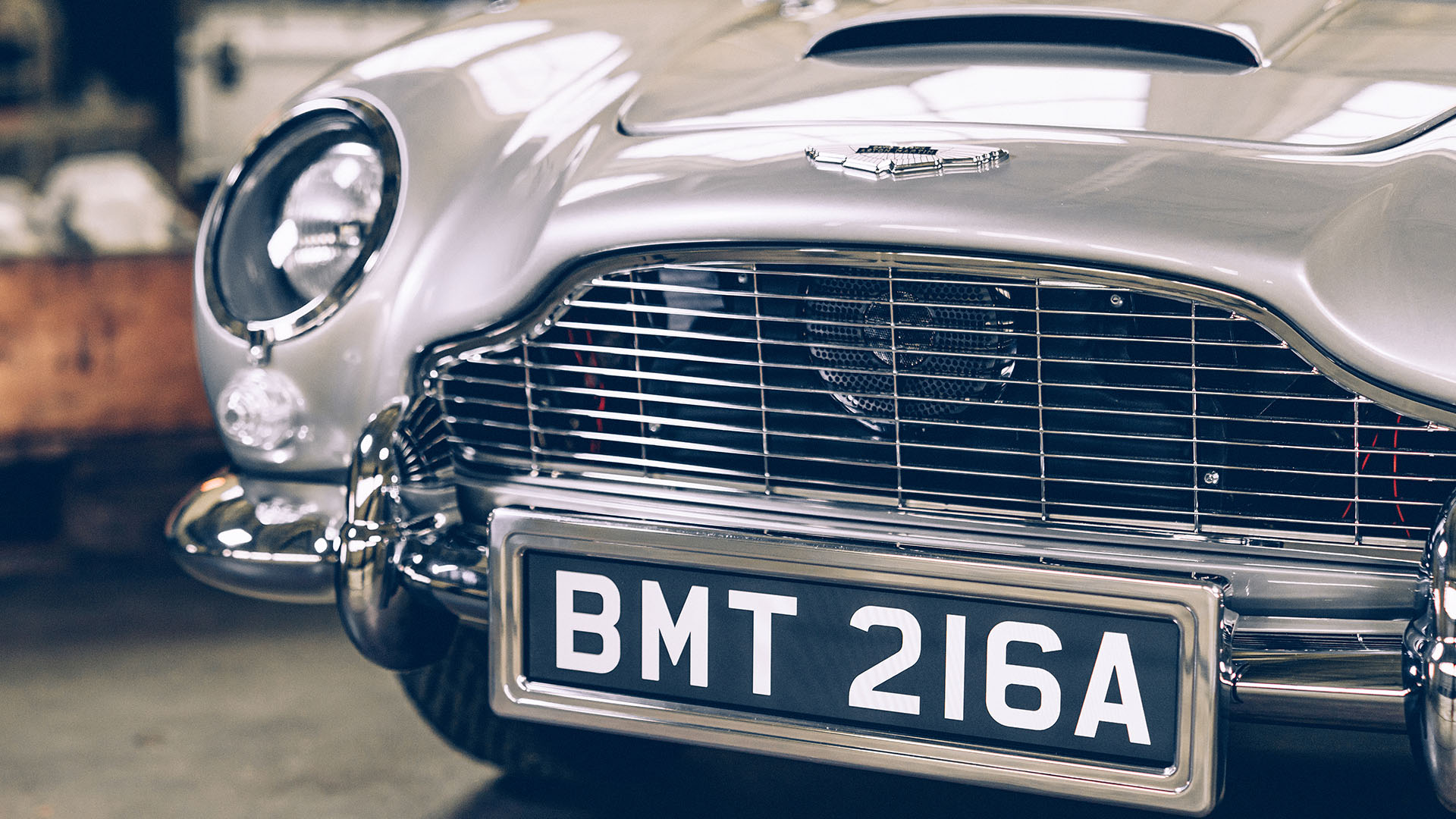

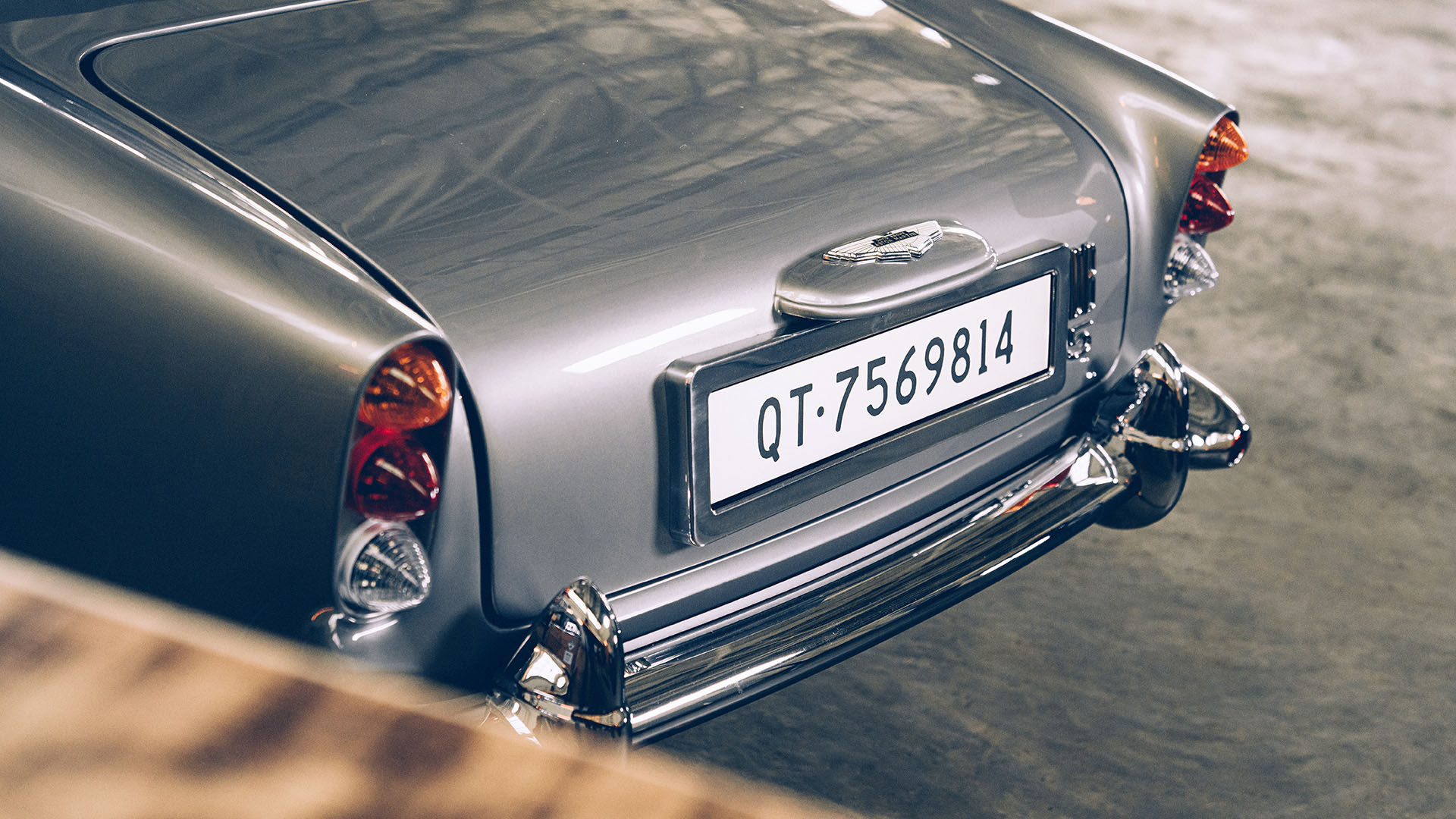
The long-awaited Lotus Emira was officially launched in early July 2021, with her official, public unveil during the famous Goodwood Festival of Speed, and this last gas-powered Lotus became an instant hit, people were literally lining up to put their order in, or better yet, to just get their name on the ‘pre-order’ list, as you couldn’t even order your Lotus Emira yet, and the ‘pre-order’ list was for RHD models only … but over the weeks after Goodwood FoS things changed, and at the end of September Lotus finally released both full specifications and the MSRP on the Lotus Emira V6 First Edition … a car loaded with technology, infotainment and comfort features.


Lotus plans to start building the Emira V6 First Edition in the spring, while the ‘i4’, the 4 cylinder version arriving in the autumn, pricing in the UK has been fixed at £75,995 while on the other side of the North Sea this new car will set you back €95,995, the US MSRP hasn’t been released yet, but a quick currency exchange leads to somewhere between $105,000 and $115,000 based on the £ and € pricetag.
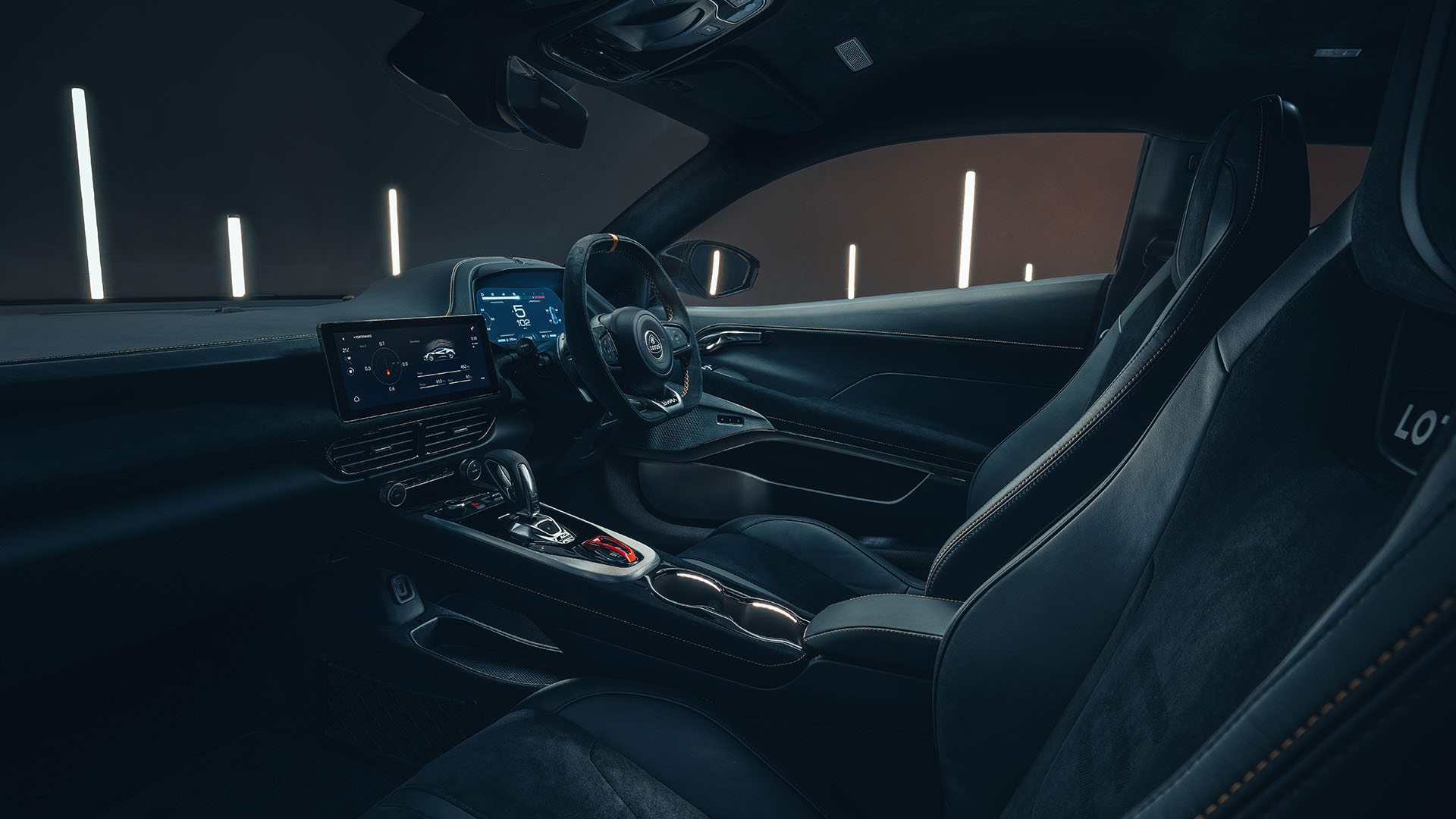

The Lotus Emira V6 First Edition will come equipped with the supercharged 3.5-Liter V6 engine delivering 400 hp through either the standard six-speed manual or the optional six-speed paddle-shift automatic transmission, for the first year of production the customer has a choice of six colors, but Lotus intends to offer more shades a year later, and the First Edition is packed with options that come as standard, including bespoke badging naturally.
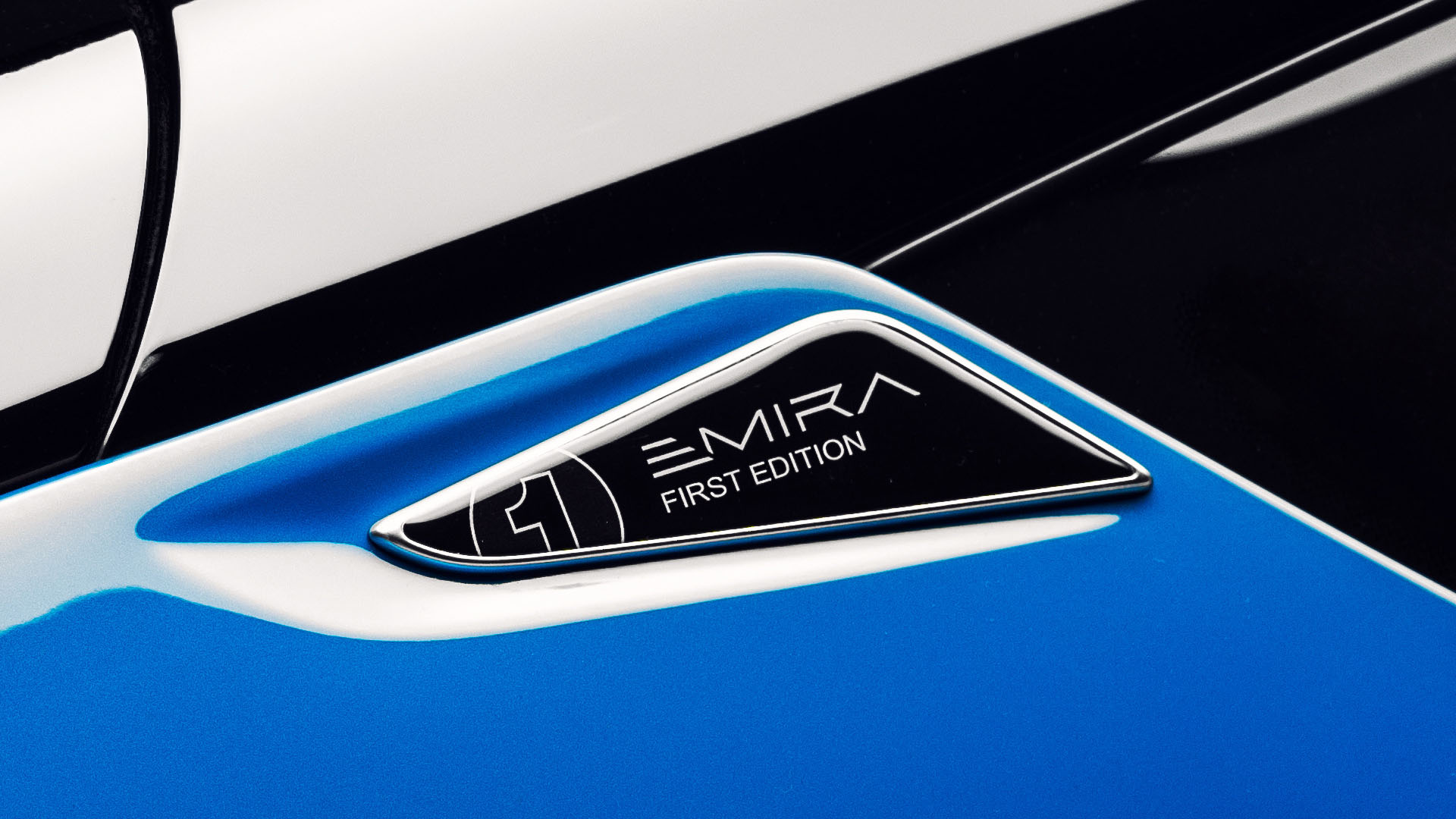

Matt Windle, Managing Director, Lotus Cars, commented: “The Emira is the most accomplished Lotus we’ve ever made, and to celebrate and reward our keenest early customers, we want to make the first cars extra special to own. The features have been carefully selected by our design team to make for a truly special and distinct First Edition.”
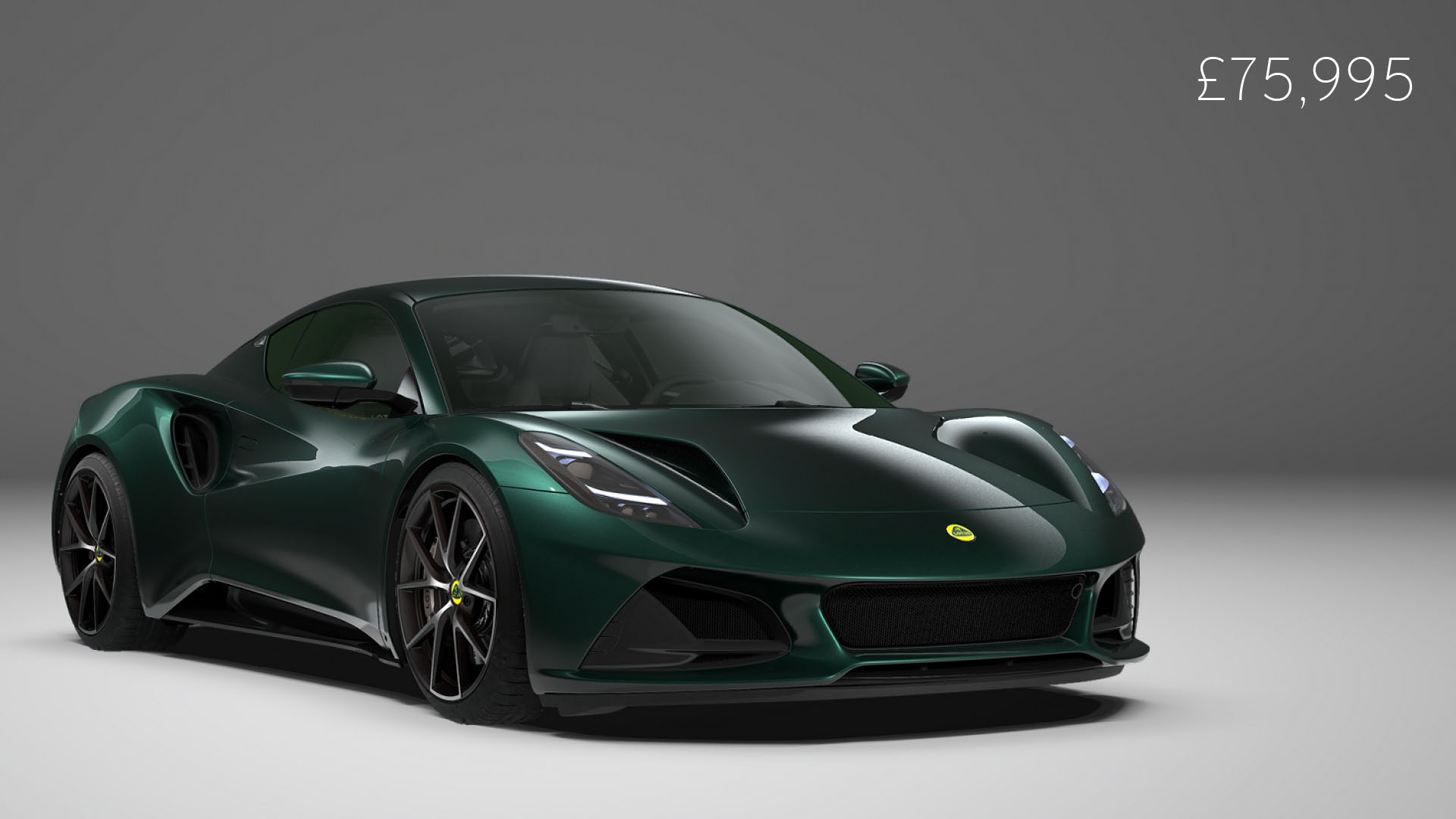

Taking the concept started by Elise, Exige, and Evora, the new Lotus Emira is really a giant step into the future, showing the brand signature and core value of the predecessors, but still improve on practicality, comfort, functionality, and technology. The Emira is built on a new lightweight bonded aluminum chassis, pioneered by Lotus and remaining an intrinsic part of their DNA.


This First Edition version comes with diamond-cut 20-inch ultra-lightweight wheels, optionally a silver or a black finish is available at no cost, while Lotus branded calipers are standard fitment too, to keep those expensive wheels safe, there is a TPMS, or Tyre Pressure Monitoring System fitted as First Edition specifications too.
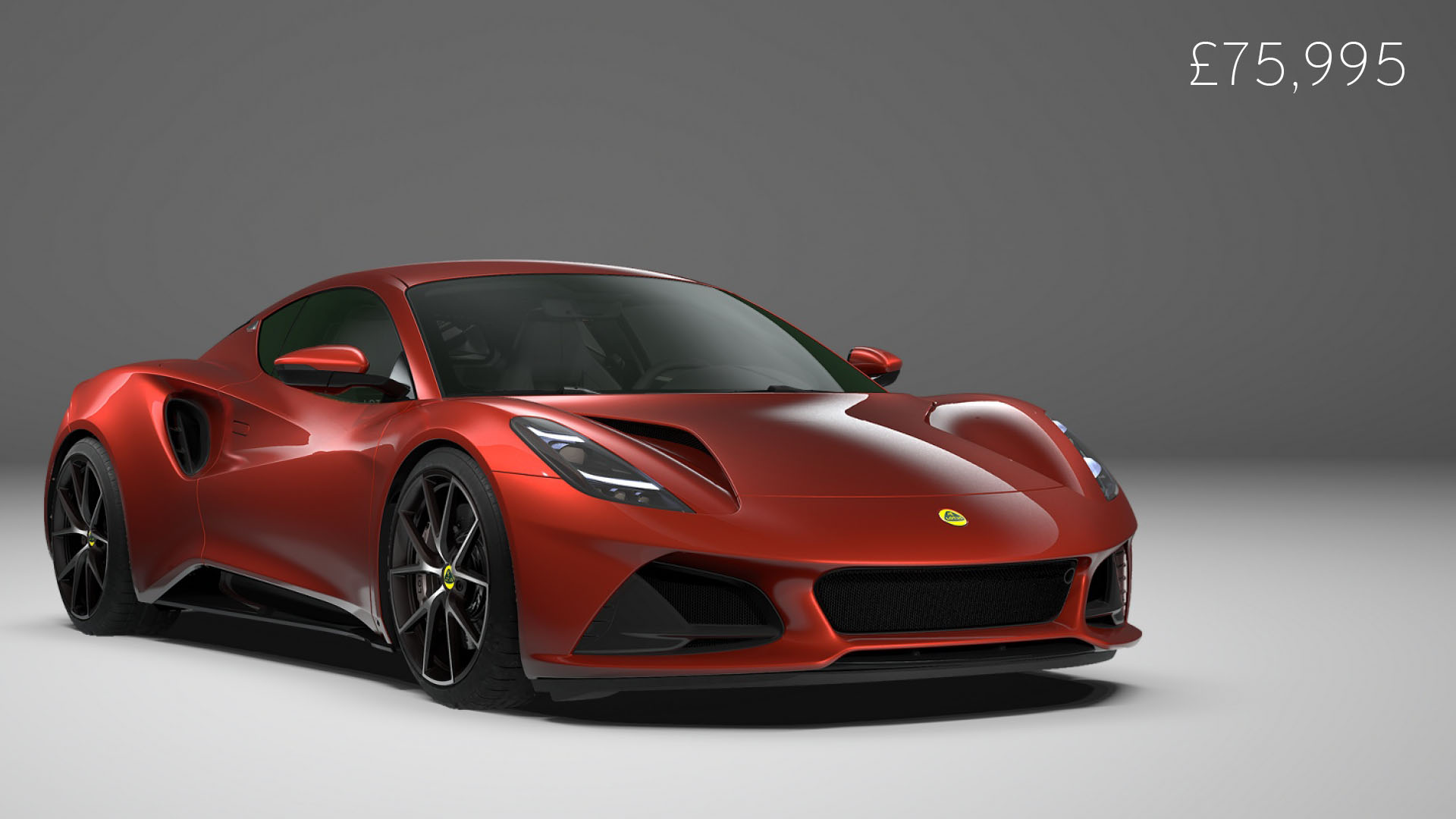

The list of available colors has been deliberately kept very exclussive, from the press launch car in Seneca Blue to Magma Red, Hethel Yellow, Dark Verdant, Shadow Grey, and Nimbus Grey. They all match very nicely with the titanium exhaust and the Lower Black package that includes a gloss black finish on the air blades in the front bumper, front splitter, side sills, and the rear diffuser.
While the exterior is limited to six paint colors, you can choose from seven different shades on the interior, red, black, grey, tan when going for Nappa leather, or black Alcantara with either red, yellow, or grey stitching on the 12-way adjustable, heated seats that even come with a memory setting, that also includes the door mirrors.


Lotus wants to offer a very comfortable ride in their new Emira, so this car comes complete with climate control, cruise control, keyless start and selectable drive modes, Apple CarPlay and Android Auto while an integrated satellite navigation system is available on most markets, all available through a 10.25-inch centrally mounted touch-screen and a 12.3-inch TFT instrument cluster ahead of the multi-function steering wheel.
Apart from the Lower Black Pack, you’ll get three more packs as standard on these First Edition models, the Drivers Pack offers a choice between Tour or Sport suspension with Goodyear Eagle F1 Supersport tires, or Sport suspension with Michelin Pilot Sport Cup 2 tires, the Design Pack comes with dark tinted glass, sports pedals and painted brake calipers in either black, red, yellow, or silver, and just so you don’t scratch those beautiful bumpers, the Convenience pack adds parking sensors to the front and a camera to the rear among other things.


Just in case, there are still a few options left to tick on that order sheet, but those will come on top of the base price for these Emira V6 First Edition models, like the £1,800 automatic transmission, or the Black Pack which contrasts the roof, cantrails, mirror housings, the Lotus badge and the exhaust tips for £1,200 only.
As already mentioned, production of the Emira V6 First Edition will start in the spring of 2022, while the 4-cylinder version will follow in the autumn of 2022, if you are looking to add a more base-level Lotus Emira to your driveway you’ll have to be patient until 2023 when they intend to release a £59,995 entry-level version with fewer options.